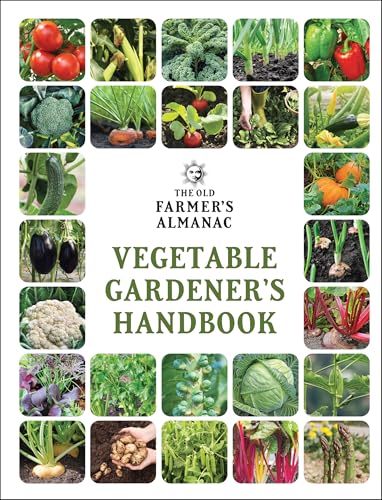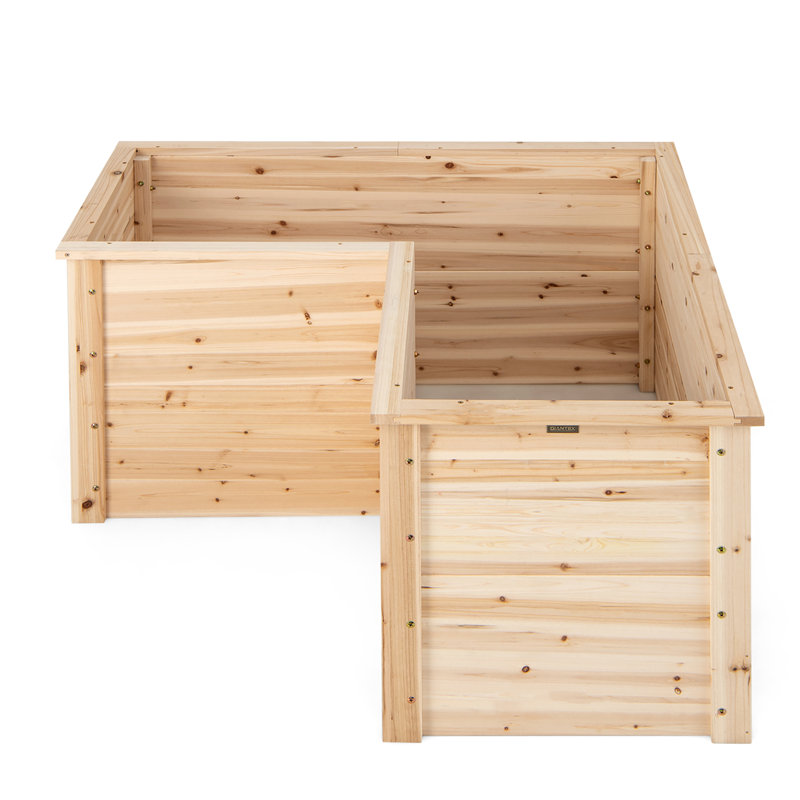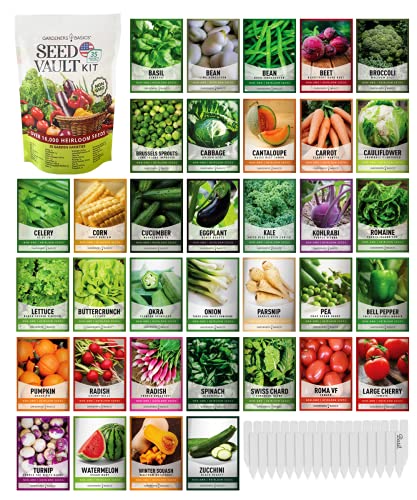25 inspirational ideas for small vegetable gardens – how to have a beautiful and productive space, whatever the size
Get the most out of your growing space with these vegetable garden ideas. Your plot will soon be brimming with fruit, vegetables and herbs

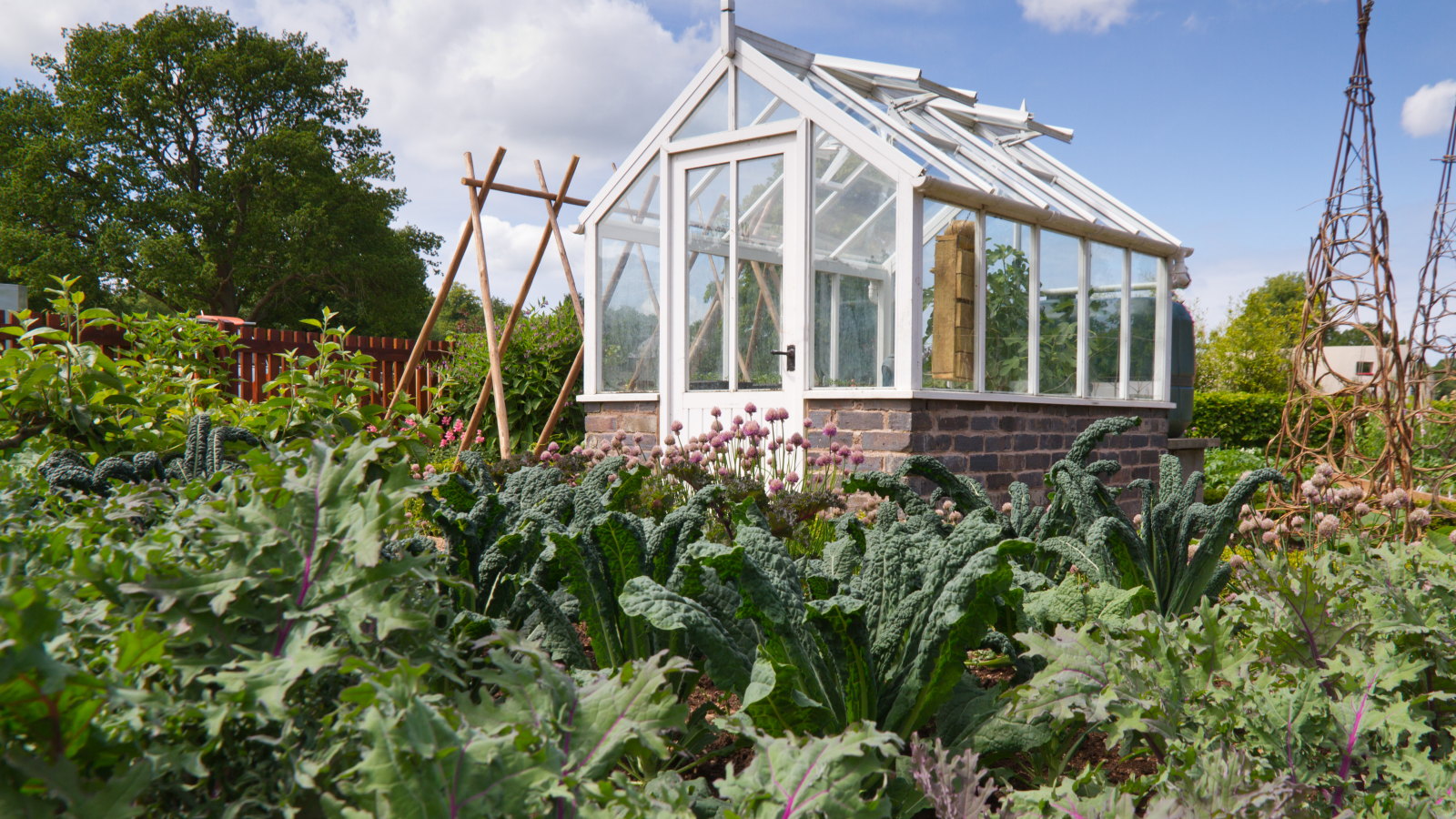
- 1. Grow vegetables that you love to eat
- 2. Stagger your planting so you have crops all year round
- 3. Incorporate herbs into your vegetable garden
- 4. Label your plants
- 5. Embrace companion planting
- 6. Position your vegetable garden near the kitchen
- 7. Consider a multifunctional greenhouse
- 8. Make the most of vertical height with hanging baskets
- 9. Build a raised bed vegetable garden
- 10. Grow vegetables in pots
- 11. Grow crops that offer rich rewards
- 12. Grow vegetables over a pergola
- 13. Grow vegetables up a trellis in smaller spaces
- 14. Grow vertically up walls or fences
- 15. Create a productive living wall
- 16. Combine vegetables with blooms
- 17. Add vegetables to flower beds
- 18. Grow for color
- 19. Create a vegetable garden in a window box
- 20. Grow fruit trees in containers
- 21. Embrace grafted fruit trees to maximize space
- 22. Add a rain barrel
- 23. Don't forget to factor in pathways
- 24. Encourage wildlife to your vegetable garden
- 25. Add a seating area to your vegetable garden
- FAQs
There is nothing more satisfying than growing and harvesting crops straight from your own garden. It is a rewarding experience and, with these inspirational ideas, you can have a beautiful and productive patch, whether you grow in a large or small vegetable garden.
A carefully planned vegetable garden can grow all kinds of crops, from tactile herbs to root vegetables and fruit trees. And a space of any size has the potential to produce a rich bounty of harvests for you to enjoy.
There is no reason why everyone shouldn't have a vegetable garden as part of their garden ideas. Whether you are blessed with an expansive plot, have a small vegetable garden, or grow vegetables in raised beds, window boxes, or hanging baskets, there are many ideas here to help you achieve homegrown satisfaction.
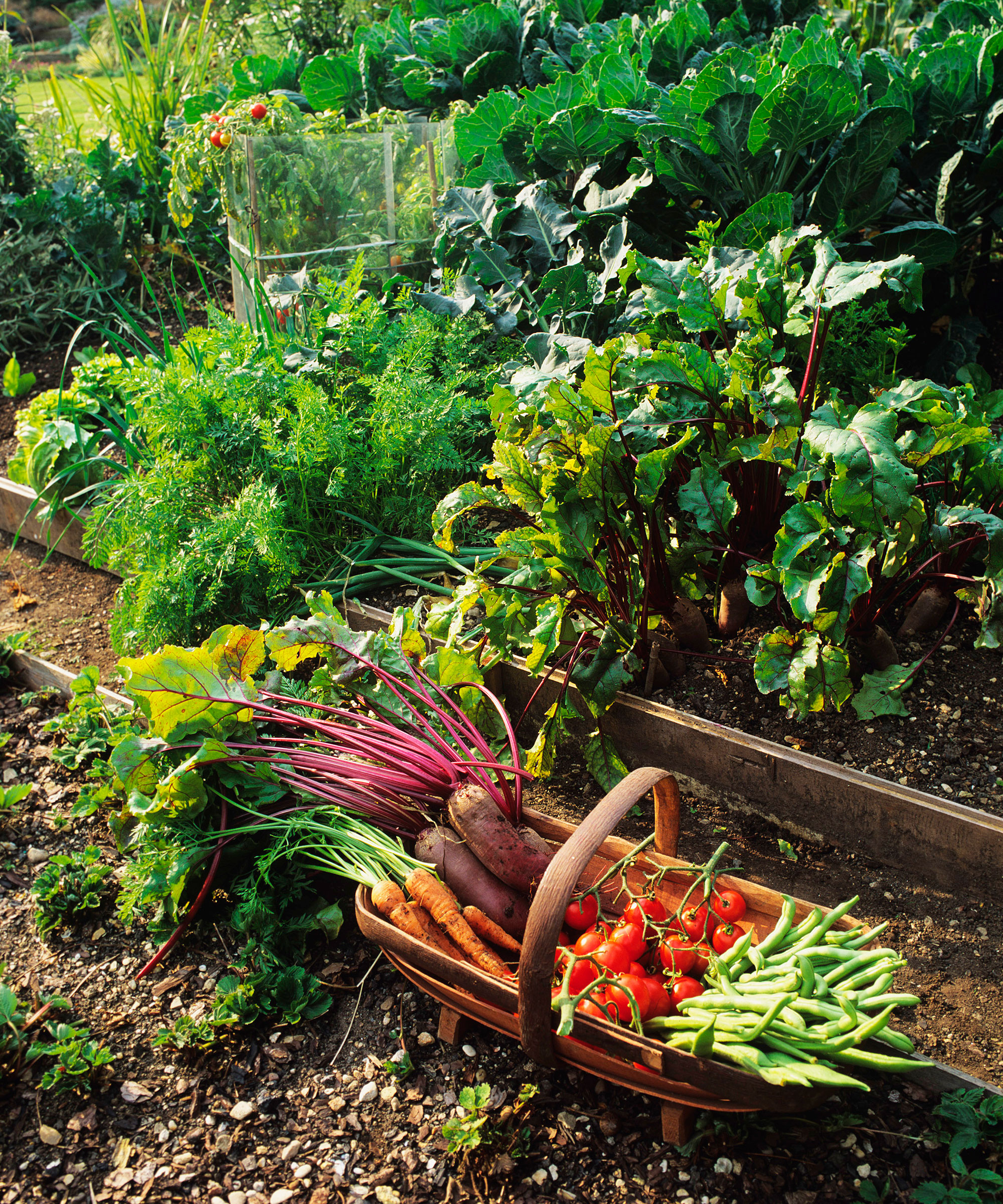
25 ideas to transform your plot – suitable for small vegetable gardens
There has been a resurgence in ‘grow your own’ in recent years, as more and more people are discovering the joys of growing and harvesting their own produce.
If you want to start a vegetable garden, there are ideas here for all sizes, aspects, and ambitions. They are all also relevant if you simply want to reconfigure an existing vegetable garden. You can choose the ideas that work best for your chosen vegetables and space.
1. Grow vegetables that you love to eat

The first step in designing your vegetable garden ideas is to choose the vegetables that you want to grow. This will guide you in your design and the style of your vegetable garden. The best way to choose your crop is simply to grow what you love to eat.
'Make a list of your favourite edibles, including herbs, and consider those that are more expensive to buy. Include different varieties of vegetables you enjoy, then look carefully at your space and climatic conditions and narrow your selection,' advises garden expert Leigh Clapp.
Design expertise in your inbox – from inspiring decorating ideas and beautiful celebrity homes to practical gardening advice and shopping round-ups.
'Plan choices so that you have harvests throughout the seasons – from the first potato crops to brassicas through the winter months.'
Once you've decided on the crops you want to grow, be sure you know when to plant vegetables so that you can start to figure out your gardening calendar.
2. Stagger your planting so you have crops all year round

You might think that vegetable garden ideas only work in the warmer months of the year; however, with a bit of forward planning, you can harvest delicious crops all year round.
There are plenty of crops that you can grow every month of the year – for inspiration, research what to plant in December and what to plant in January.
'When it comes to starting out, try edibles known to be easy to grow, such as tomatoes, and plan when you plant different crops so you can enjoy year-round production and supply. Your greenhouse will enable you to be significantly more productive in your growing year than if you were purely growing outdoors, especially if you know the right growing techniques,' says Tom Barry, CEO of Hartley Botanic.
If growing vegetables in the greenhouse, consider adopting vegetable garden container ideas, as these potted plants can be grown outside when the weather is good but can be moved into a greenhouse when the first frost threatens, thus expanding the growing season.
3. Incorporate herbs into your vegetable garden
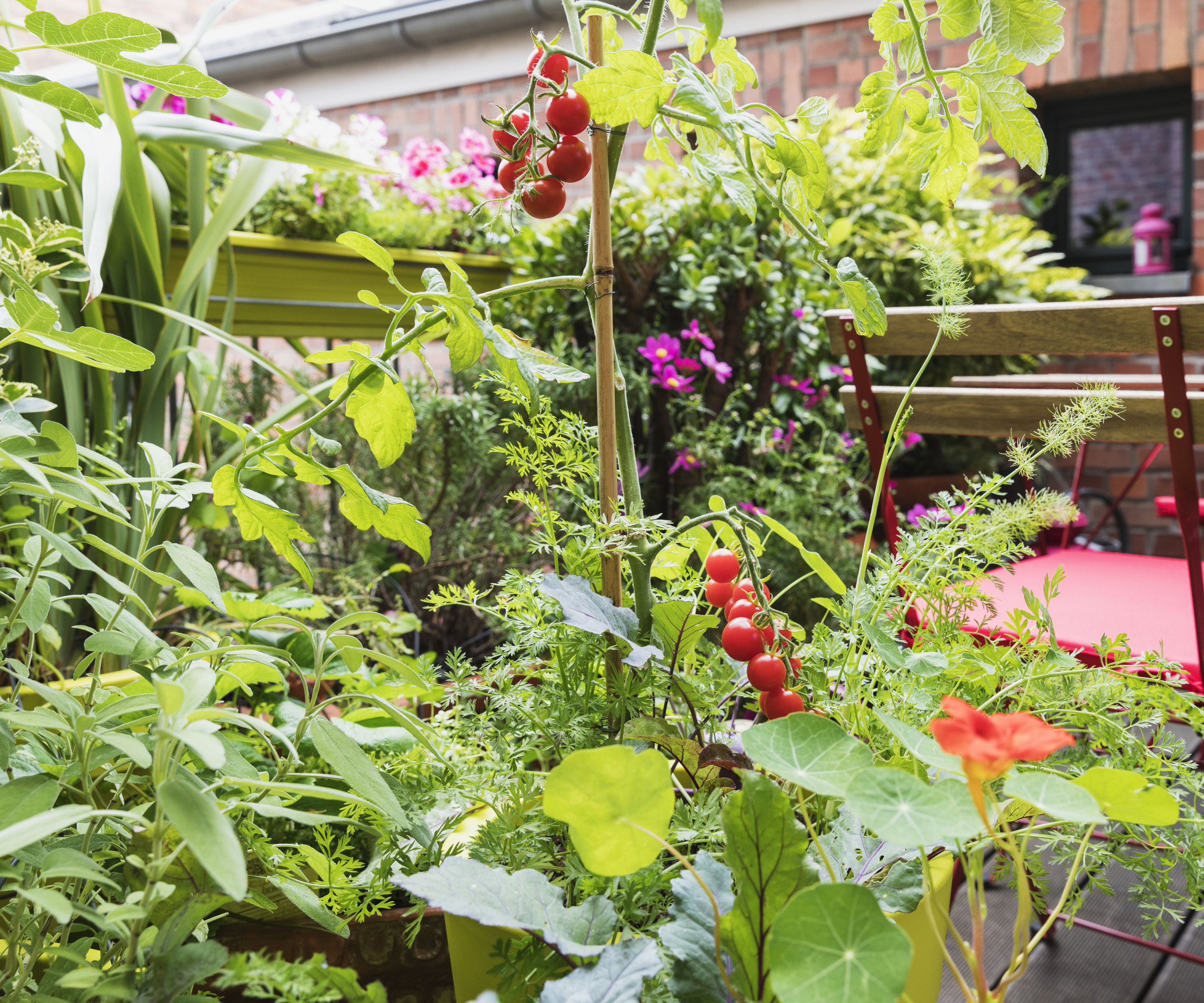
Aromatic herbs are one of the easiest crops to add to your vegetable garden ideas. They can be grown separately as part of herb garden ideas or can be incorporated into a wider vegetable garden.
As heavily fragrant plants, herbs provide so much more than just a delicious crop. They also act as a great pest deterrent, helping your other vegetables to thrive.
'Spearmint, sage, thyme, lemongrass and rosemary are not only great culinary herbs to add to your garden, but the strong-smelling oils from these plants also act as a natural wasp-repellent while creating an aromatic experience for you. Place potted herbs around your dining area or, if you’re limited on space, go vertical by hanging herb planters on a nearby wall,' recommend experts at The Greenhouse People.
If you're hoping to grow herbs as part of your vegetable garden ideas, be sure you know when to plant herbs to give them the best start in life.
4. Label your plants
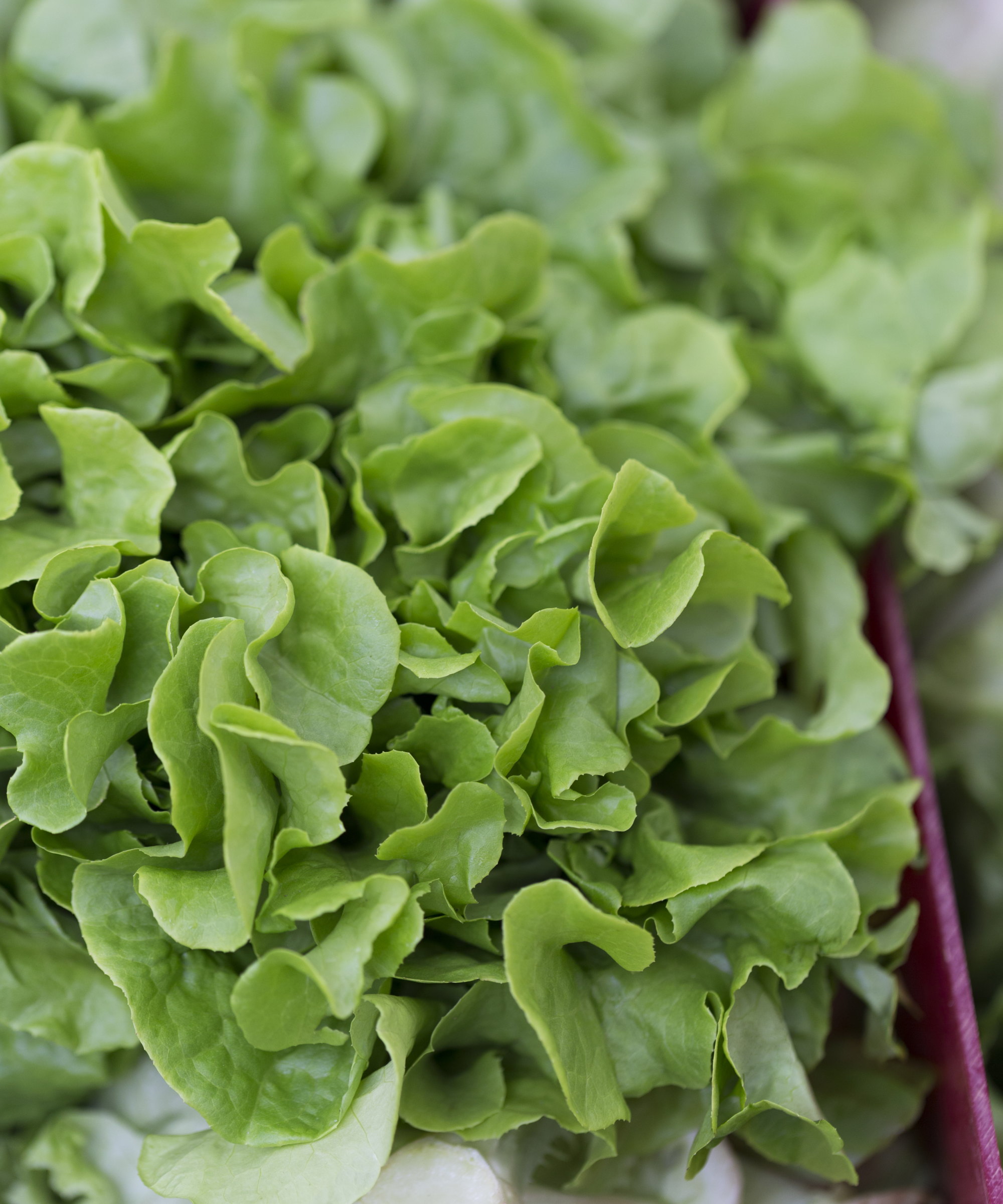
Anyone who has ever done any gardening will know how easy it is to forget what you’ve planted. While this doesn’t matter so much when you are planning a cut flower garden, it is vital when you are growing vegetables, as you need to be certain what you're eating.
Plant labels have a history of being rather unattractive, with options limited between bright white plastic strips with permanent marker or wooden sticks that inevitably degrade over the course of the season.
Thankfully, there are now lots of aesthetic and long-lasting designs that are perfect for your vegetable garden ideas – from DIY projects to durable slate designs, like these natural slate plant labels at Walmart.
5. Embrace companion planting
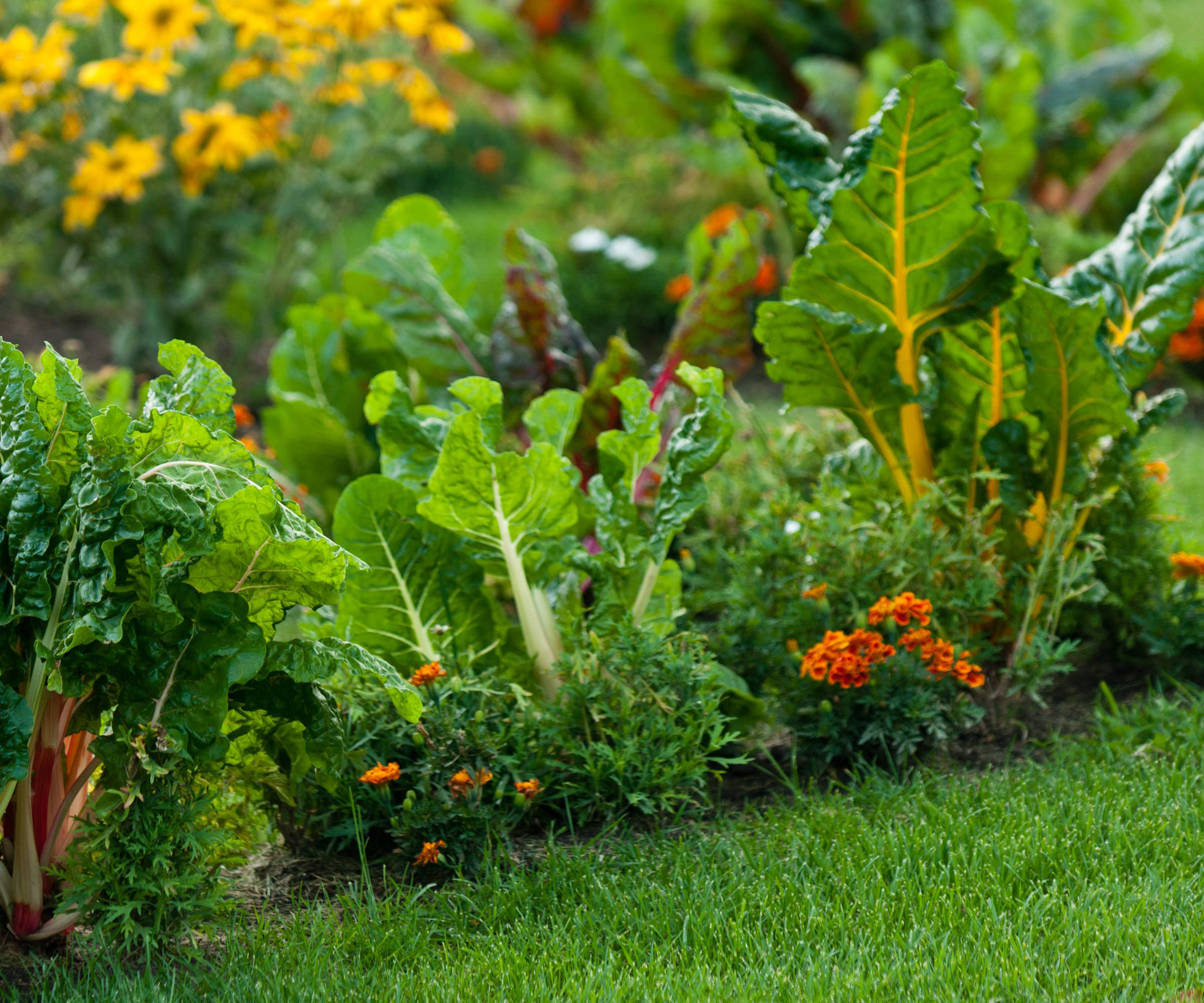
Traditional vegetable garden ideas see the crops separated from the floral areas of the garden. However, this is not necessarily the best approach in terms of maximizing yield.
Instead, integrating blooms amongst your crop is a great way to embrace companion planting and, if you plant flowers that attract bees, will help to increase the number of pollinators to your crops.
Also take inspiration from kitchen garden ideas as this historical garden style will help you to create the perfect low-maintenance plot, achieving the right balance of vegetables and blooms.
Even if you don't want all your backyard ideas to be focused on vegetable garden ideas, there are still lots of top tips for planning a kitchen garden that will help your vegetable garden ideas thrive.
6. Position your vegetable garden near the kitchen
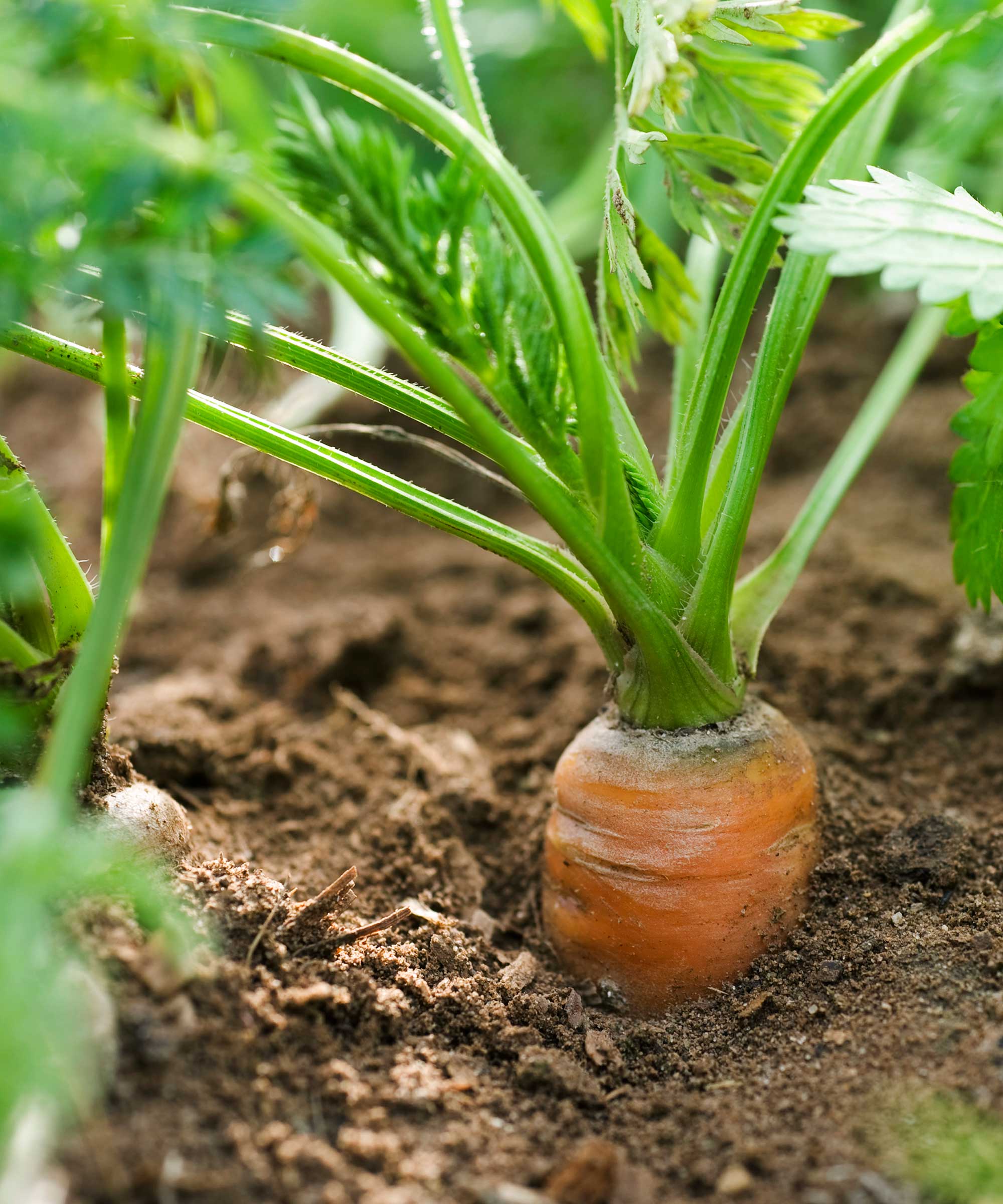
'Most of the plants going into vegetable patches are annuals. They are working with a short timescale and need to grow rapidly. To enable them to put on this performance, they need all the help they can get and plenty of food to fuel this growing process. That's only possible in full sun,' explains Sarah Raven.
This small vegetable garden idea allows placement of the crops closer to the kitchen for ease of use, and so you can pay close attention to any pests and diseases.
7. Consider a multifunctional greenhouse
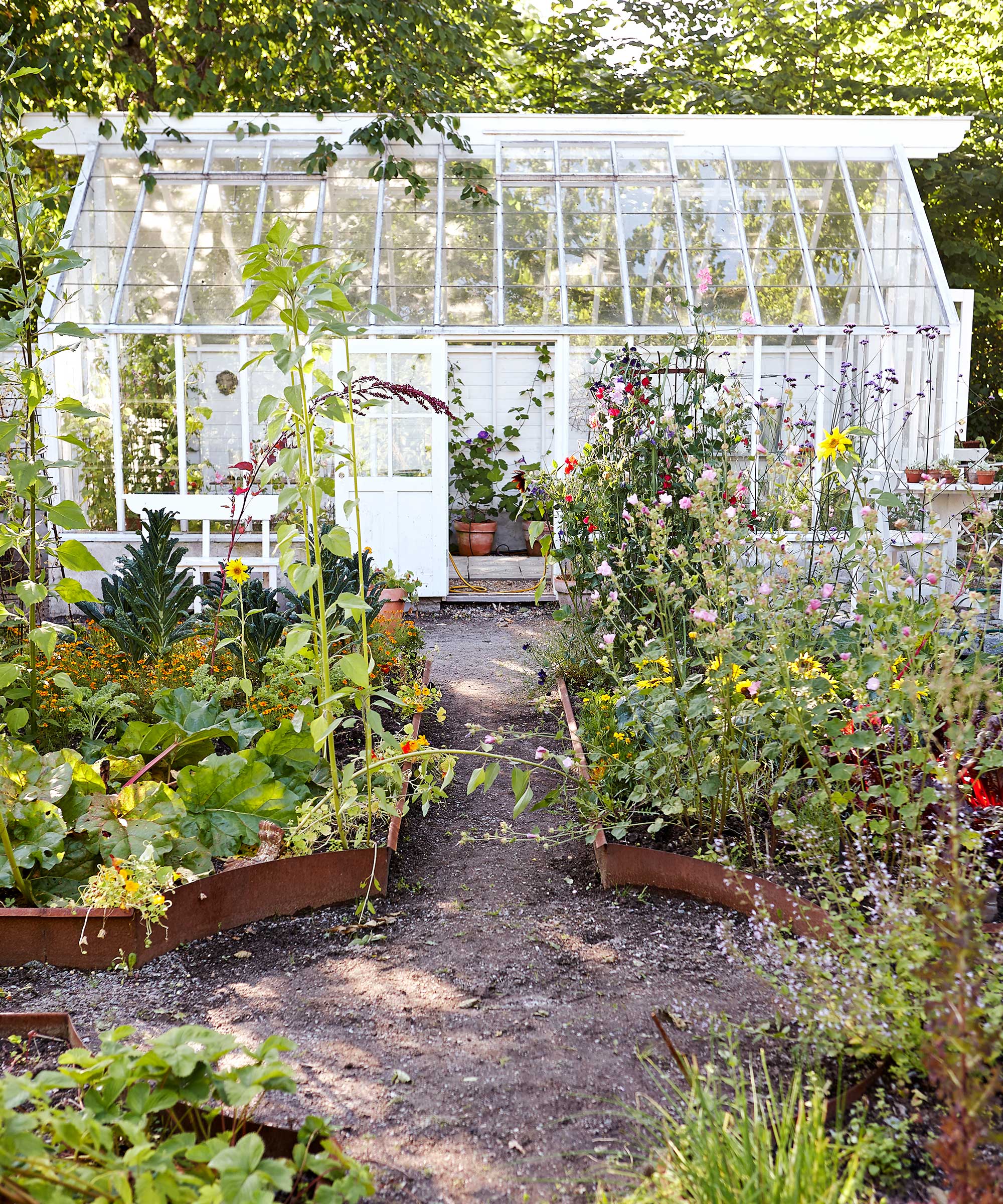
Greenhouse ideas form an essential part of the vegetable garden, allowing you to start as many seedlings as your heart desires, without the challenge of predicting frost or worrying about where they will live.
The benefits are not just felt at the start of the growing season, either, as even an unheated greenhouse can delay the effects of frost by several weeks, letting you maximise the yield of crops – such as picking fresh tomatoes well into fall.
However, in smaller spaces, you may face the need for compromises; the most common being between a shed and a greenhouse. Both have benefits, but often the necessity of a shed's storage potential will outweigh the botanical benefits of a greenhouse.
This does not have to be the case, though. If you’re struggling to choose between a greenhouse and other shed ideas, then consider a design that combines both elements.
Here, the shed lets you store all your gardening tools out of sight while the adjoining lean-to greenhouse gives you plenty of space to raise your crops, making it a clever, compact solution for more petite spaces.
8. Make the most of vertical height with hanging baskets
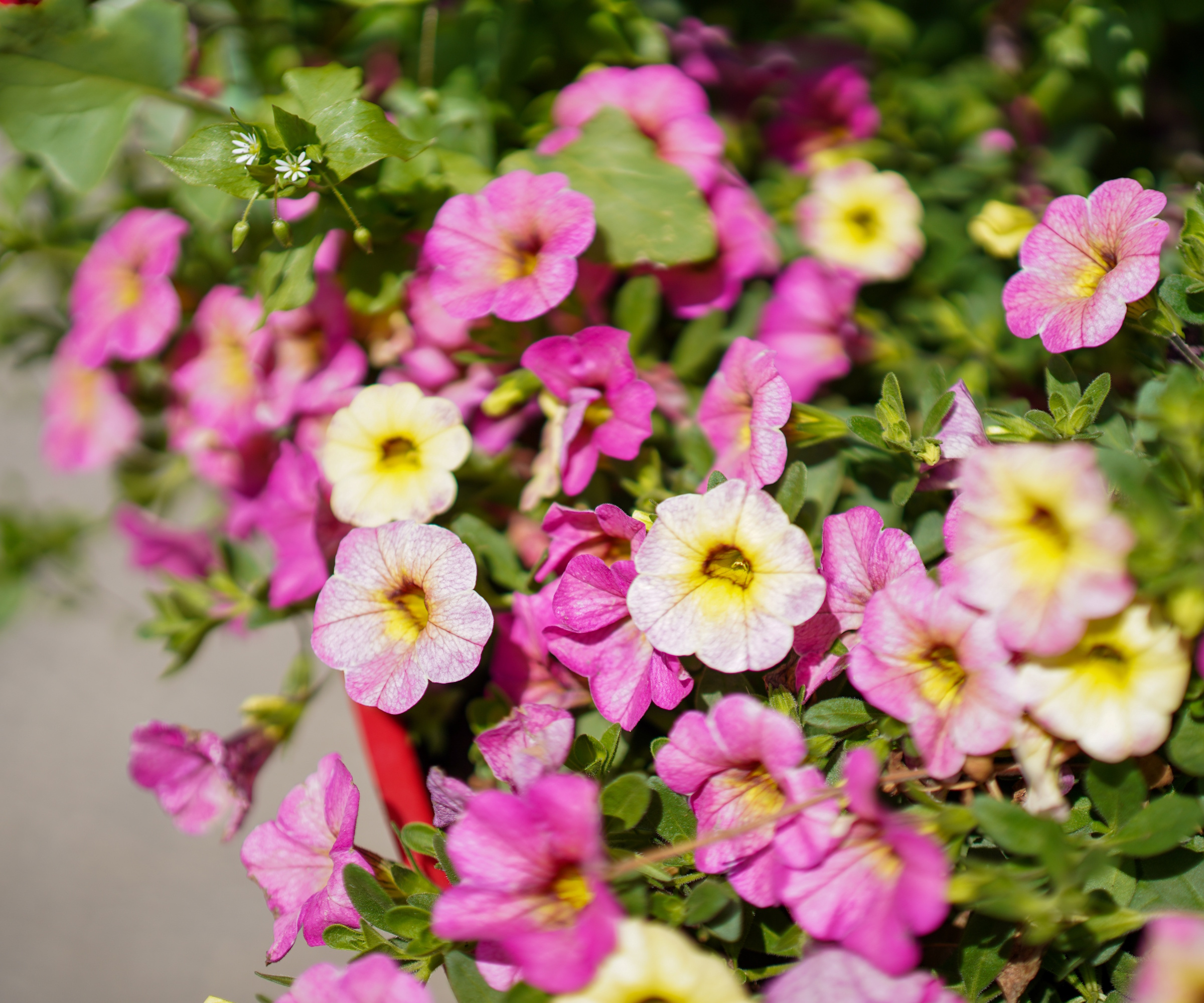
The best plants for hanging baskets aren't just trailing blooms; in fact, hanging baskets can also be used to grow a wide range of vegetables, helping to increase the productivity of your small vegetable garden ideas.
Taking up no ground space, they provide a versatile growing platform for a wide range of vegetables, working particularly well with cut-and-come-again lettuce, arugula, and spinach, as well as being able to be used for growing tomatoes or as herb planter ideas.
Since the vegetables are elevated above the ground, they are inaccessible to slugs, snails, rabbits and other animals who may decimate your crops when grown at ground level – protecting them from this helps to boost your yields.
You can even consider adding more decorative hanging baskets, like this aged ceramic hanging basket at Wayfair.
9. Build a raised bed vegetable garden
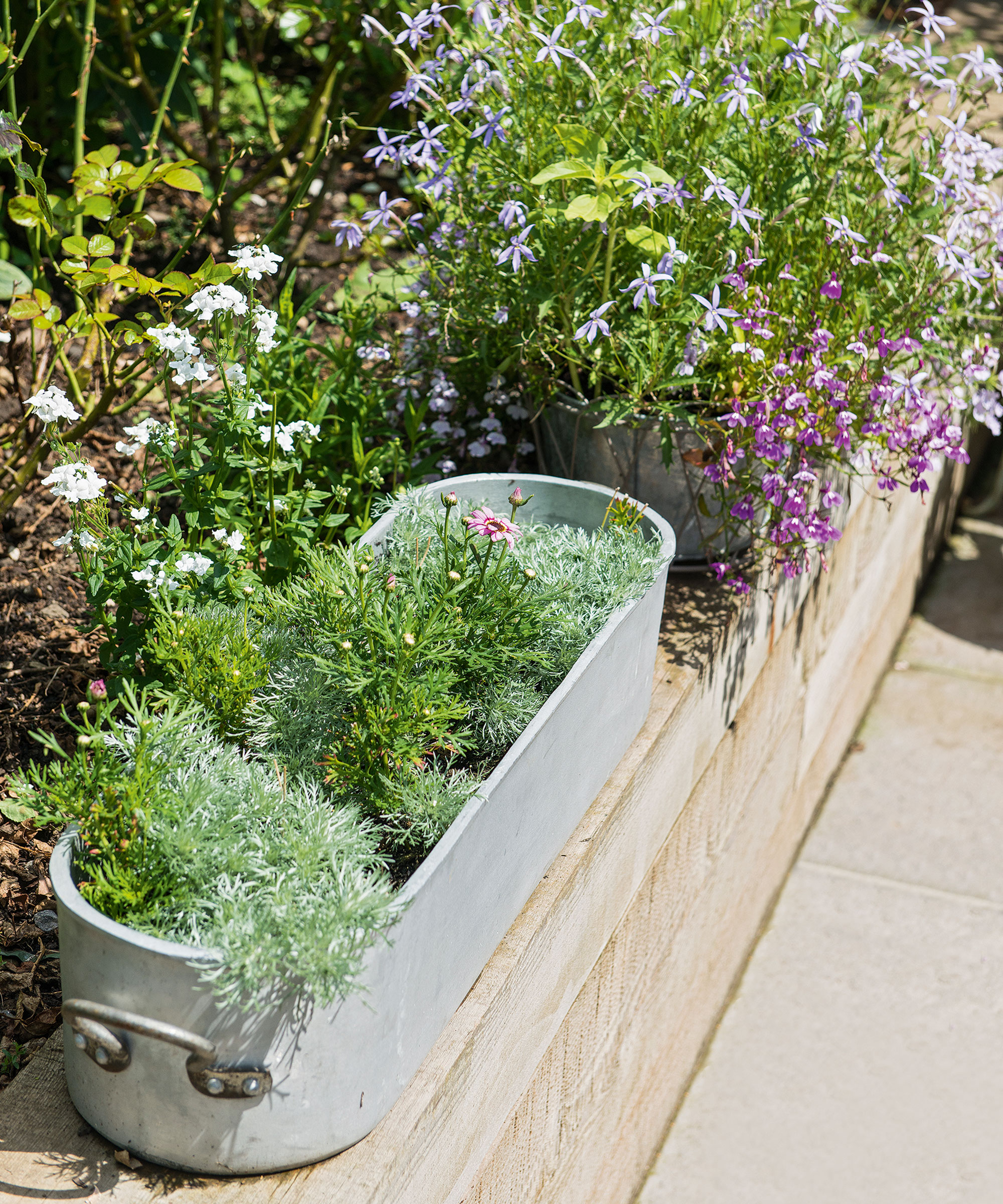
Raised garden bed ideas are a popular way to grow edibles as part of small vegetable garden ideas.
Wood, brick or sleepers can be used to frame your bed, and there are plenty of kits on the market – or you can follow Monty Don's raised bed tips. Fill your beds with good-quality soil, and then add your fruit or vegetable crops.
You may like to plant in neat rows or decorative patterns for a mini potager effect, mixing in some companion planting.
Rotating the crops ensures pests and diseases don’t build up, and also makes the nutrients added by one plant available to the subsequent plants.
You can get kits to build either wooden or metal raised beds, like this galvanized metal raised bed garden kit at Amazon
10. Grow vegetables in pots
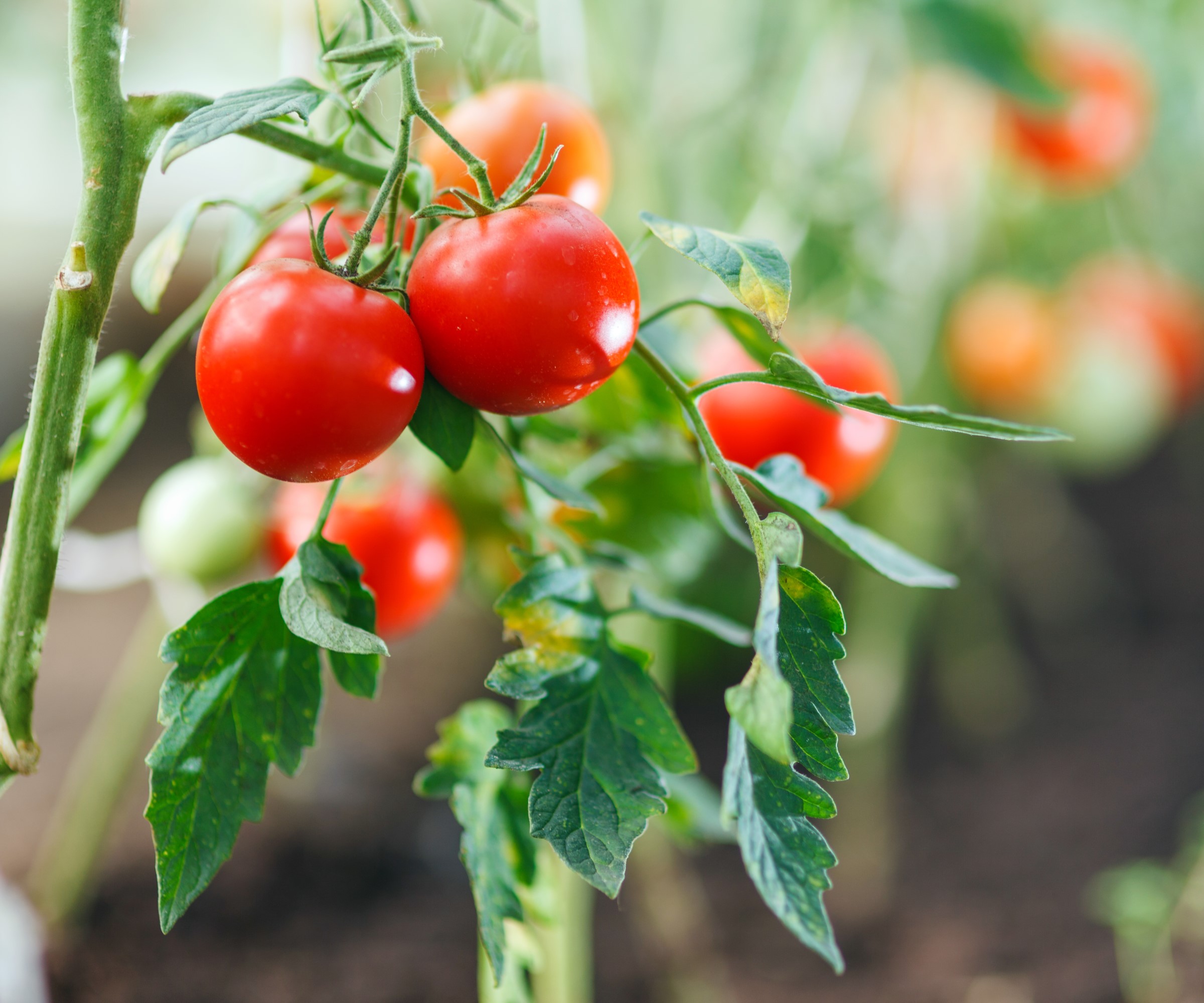
Shady areas are often a problem in smaller gardens; however, vegetable garden container ideas offer the perfect solution as you can move them to follow the sun throughout the day.
This means that you're not just limited to vegetables to grow in shade, but in fact can grow a wide array of edibles in your small vegetable garden ideas.
Gardening expert Carol Klein says: 'There are loads of vegetables you can grow in pots. Absolutely masses of them. All the salad crops you can grow so easily.'
Potted edibles and other container gardening ideas are particularly convenient for small vegetable garden ideas. They are particularly useful for vegetable gardens that are part of balcony gardens or placed on patio ideas since they don't require borders or raised beds.
Planting a large container with a mix of flowers – particularly flowers that attract bees – and a range of crops, such as different salad leaves and chillies, is both decorative and practical. Regularly harvesting leaves of vegetables, such as chard and lettuce planted in groups, will avoid crowding.
11. Grow crops that offer rich rewards
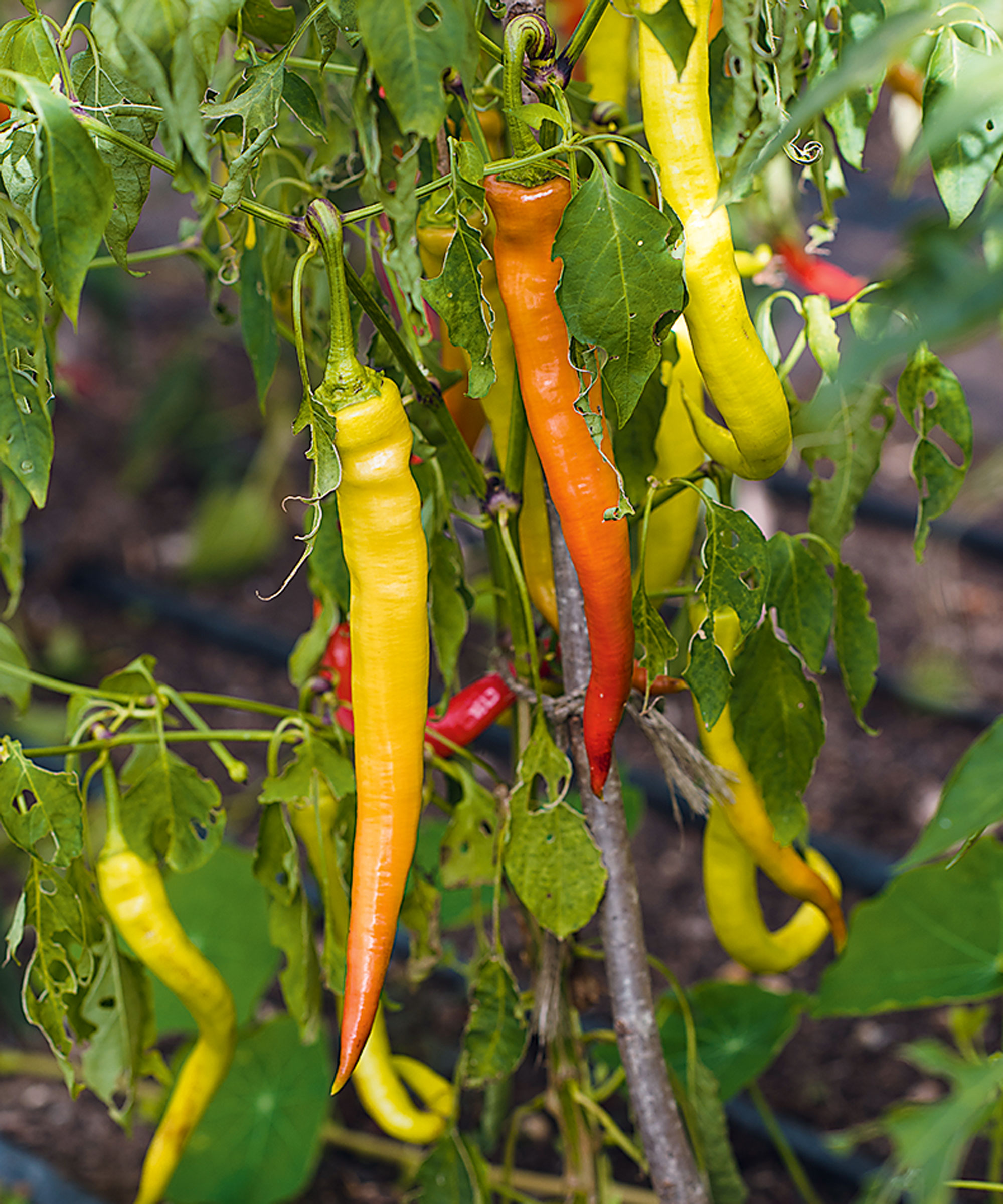
The trick for a successful small vegetable garden is to grow small amounts of different crops that offer big rewards.
Opt for easy bumper crops like cut and come again salad leaves, chilli plants, fresh herbs, leafy greens, and super-sweet peas straight from the pod.
'Over the years, certain plants and varieties have emerged as front runners in the time/reward ratio,' says Sarah Raven.
'They’re the ones that are quick and easy to grow, so they will do well even if you don’t have much gardening experience. Whenever I’m asked by new grow-your-owners which plants to go for, I say cut-and-come-again leaves every time.'
12. Grow vegetables over a pergola
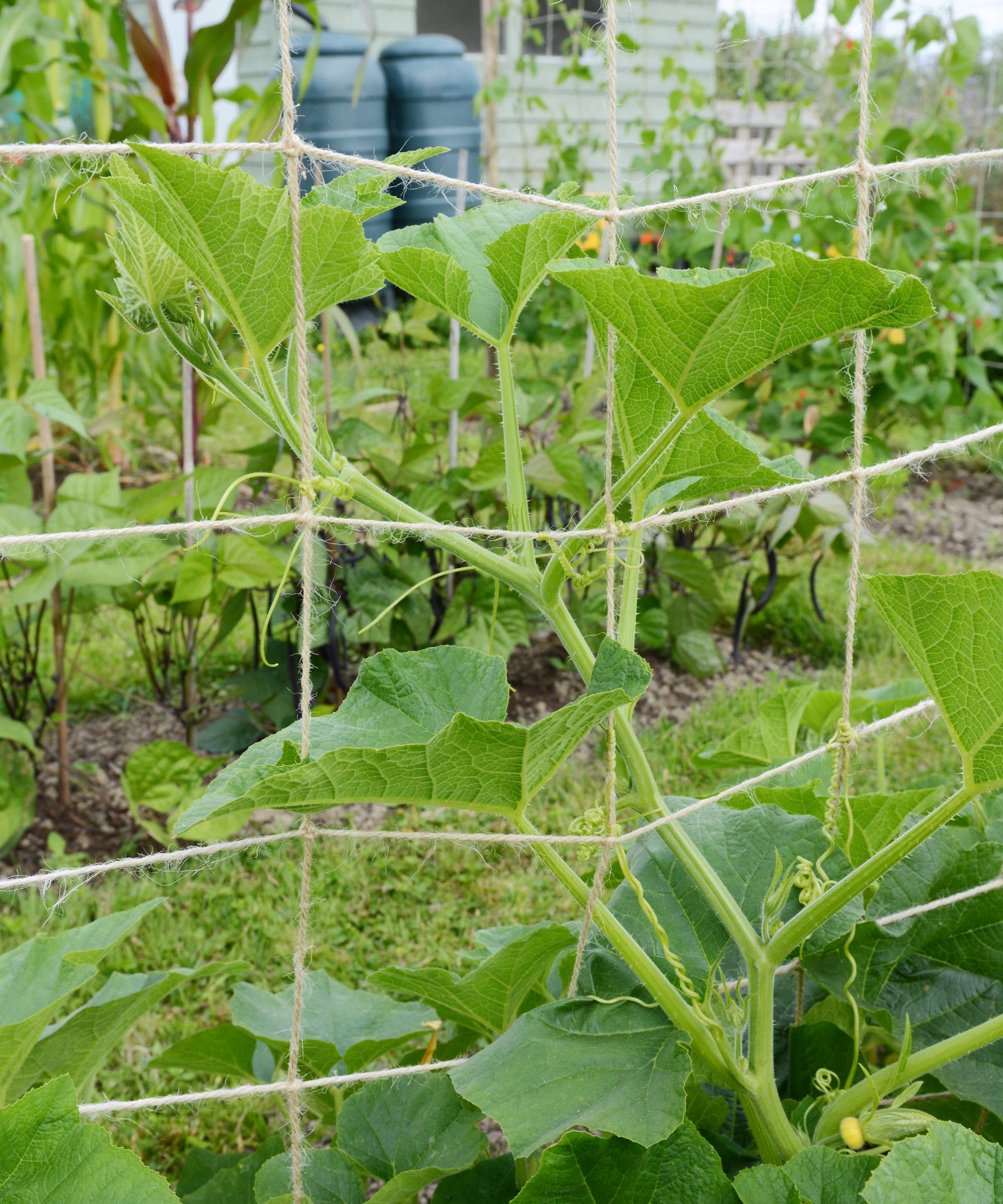
Vertical garden ideas are a great way to go when designing a small vegetable garden. Traditionally, rambling roses or the best flowering climbers are the natural choices for training over a pergola; however, you can also use them to support vegetable vines.
The best vegetables to pair with your pergola ideas are cucumbers, squash, pumpkins and beans, as these require a support system in order to grow.
Growing your crops vertically will not only make the most of the available space but will also help to protect them from slugs and other pests – they are also easier to care for.
'When growing vegetables over a pergola, it is easier to reach the fruit as it grows,' explains Lindsey Hyland, founder of Urban Organic Yield. 'You'll also save on your garden's water consumption since the plant's roots are confined to a much smaller surface area.'
If you're wondering how to begin growing vegetables over a pergola, then learning how to grow cucumbers vertically is a great place to start.
13. Grow vegetables up a trellis in smaller spaces
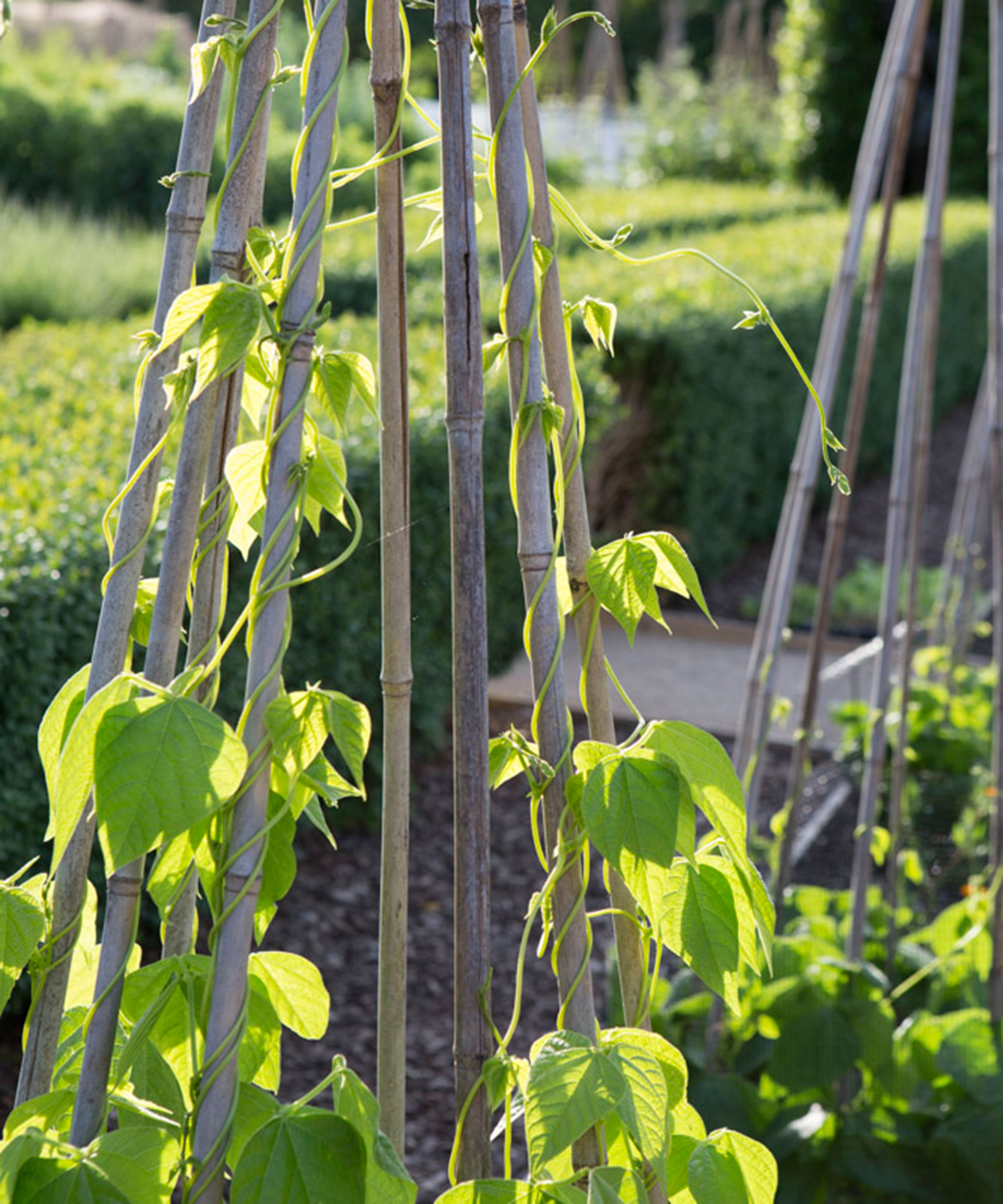
A super-smart small vegetable garden idea is to try vegetable garden trellis ideas, to make the most of the space by using vertical surfaces to grow crops up – this is particularly useful if you are looking for ways to incorporate vegetable plants into courtyard garden ideas.
Add in some herbs, which make excellent potted plants and can also be beneficial for companion planting, and you could have all you need to rustle up a delicious homegrown meal at your fingertips.
You can get a planter box with trellis attached that is suitable for growing vegetables vertically, such as this garden bed with planter at Walmart that is also self-watering.
14. Grow vertically up walls or fences
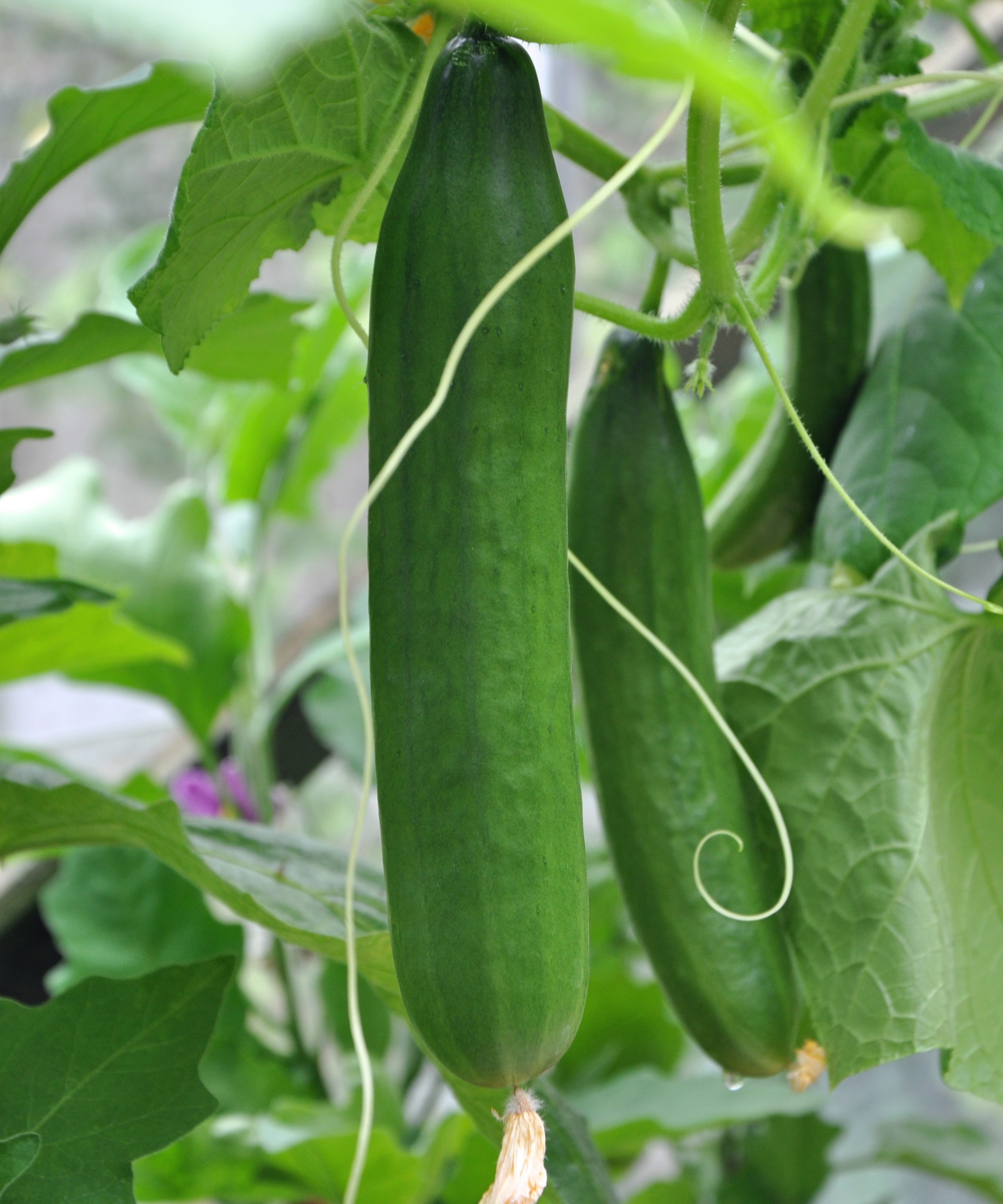
Experiment with climbing crops to make the most of space when you plan a small garden:
- Cover fences or walls with wire, twine or lattice for beans, peas or espaliered fruit; train vines up pergolas, and create edible screens or step-over edging.
- Outdoor plant stands tiered, using old ladders, stacked containers, palettes or metal stands, also offer the opportunity for a vertical vegetable garden and many different options for small vegetable garden ideas, even in a small garden with decking.
Do some research for a system that suits your location, and experiment with which crops work the best.
In general, go for reliable choices, such as clumping and running herbs that regenerate after being cut back hard, red perilla, salad leaves, sugar snap peas, edible flowers and strawberries.
TOP TIP: If a wall is in a shady spot, it can also be painted white to reflect light back onto a climber, which will also make a small garden look bigger.
15. Create a productive living wall
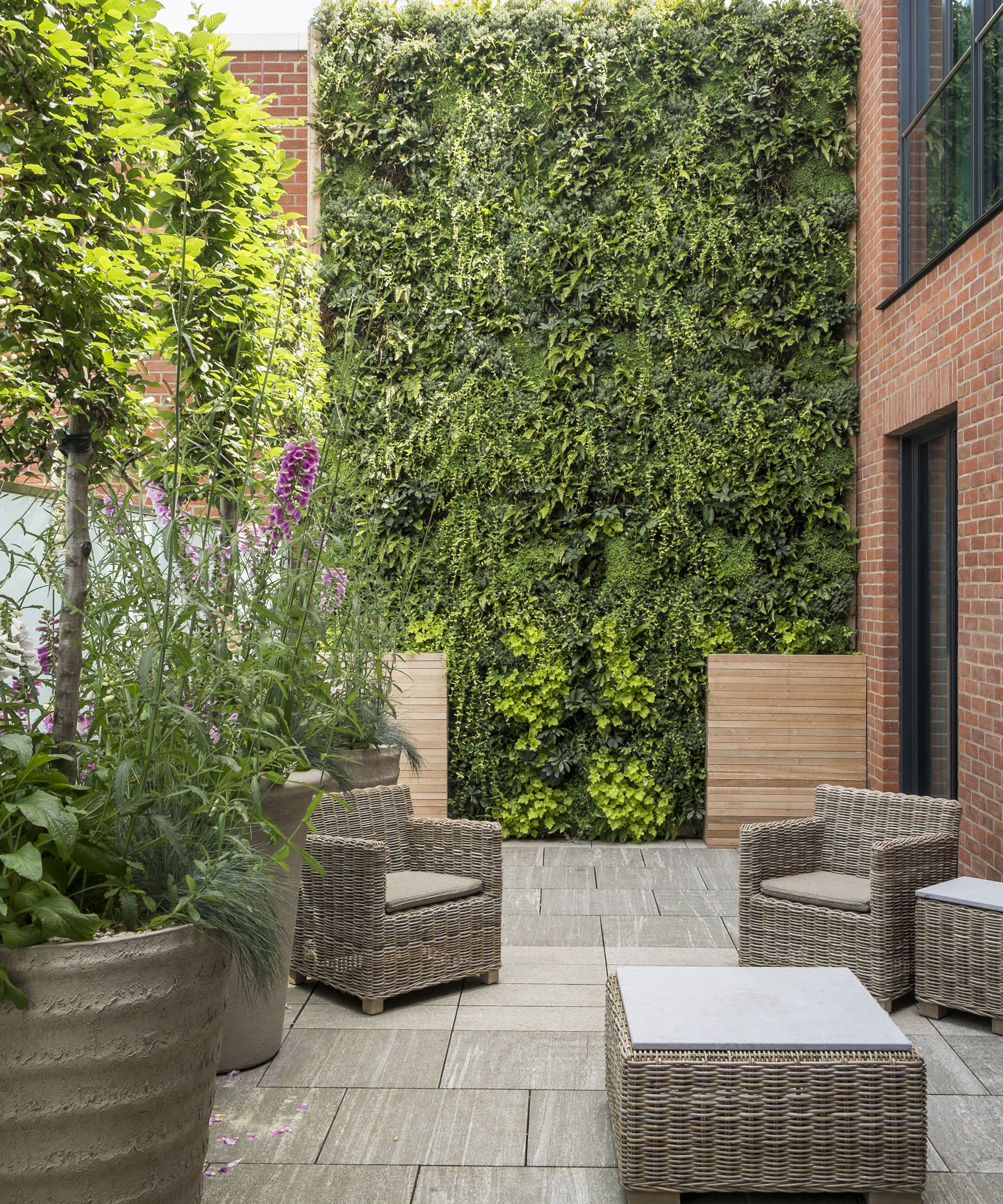
Growing plants vertically is a great way to maximize the productivity of your plot. However, you aren't just limited to growing cucumbers or growing runner beans on trellises – though there are lots of trellis ideas to help inspire you.
Living wall ideas provide a great opportunity to make the most of all your available space.
They also offer a great way to add vegetables to your patio or small garden ideas. These living planters are hung against a wall or fence and feature individual pockets into which you can plant your crops.
Obviously, this would not work for all vegetables – especially not root vegetables or those with long roots.
However, leafy vegetables such as arugula, cut and come again lettuce, spinach or even small cherry tomatoes are great choices for your vegetable garden ideas.
16. Combine vegetables with blooms
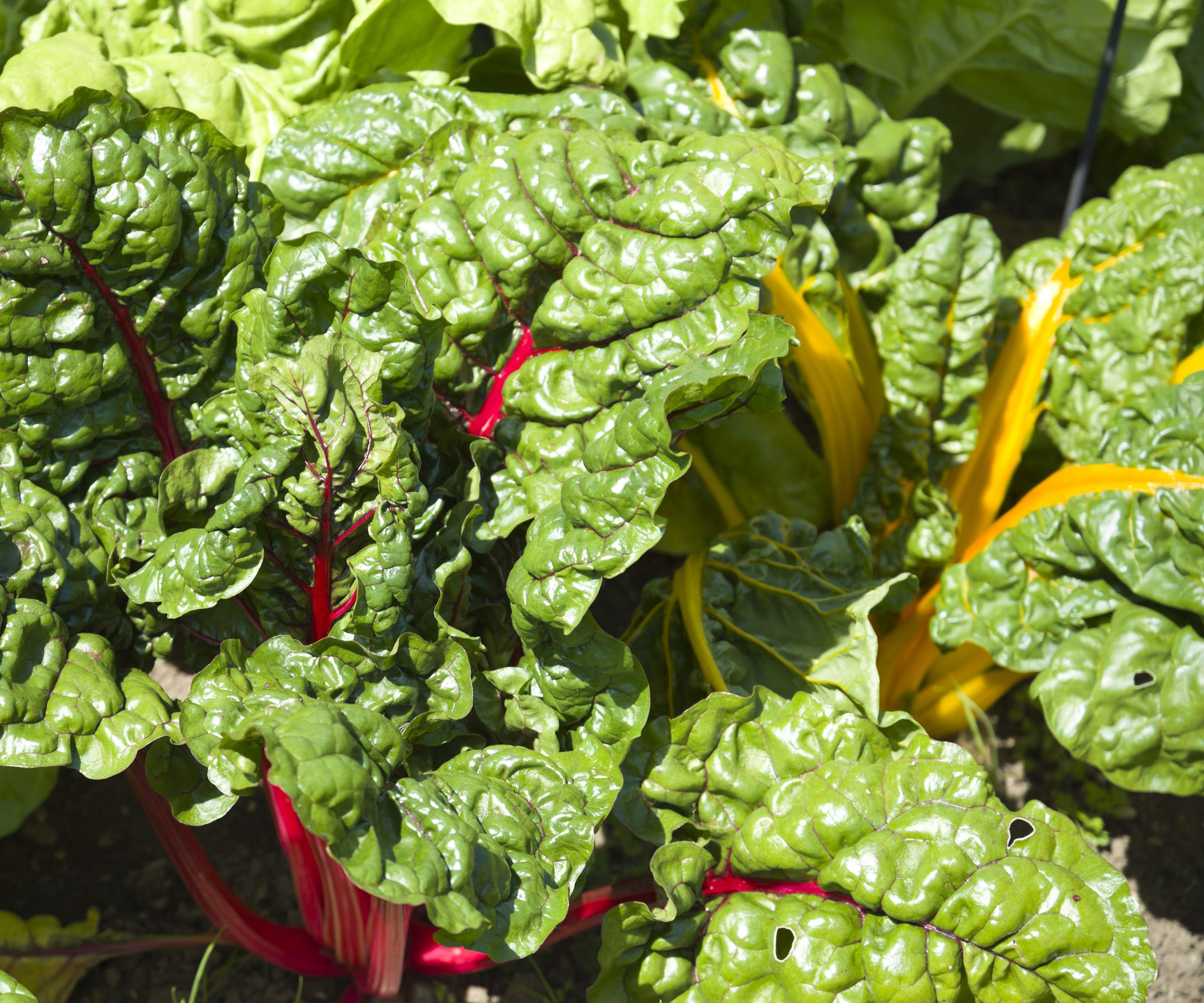
If yours is a small garden, you will want to plan for the best of both worlds, combining small vegetable garden ideas with flower bed ideas. If this is the case, treat your vegetables just as you would other plants, growing three of the same vegetables alongside repeated flower planting to create an impactful, cohesive look.
17. Add vegetables to flower beds
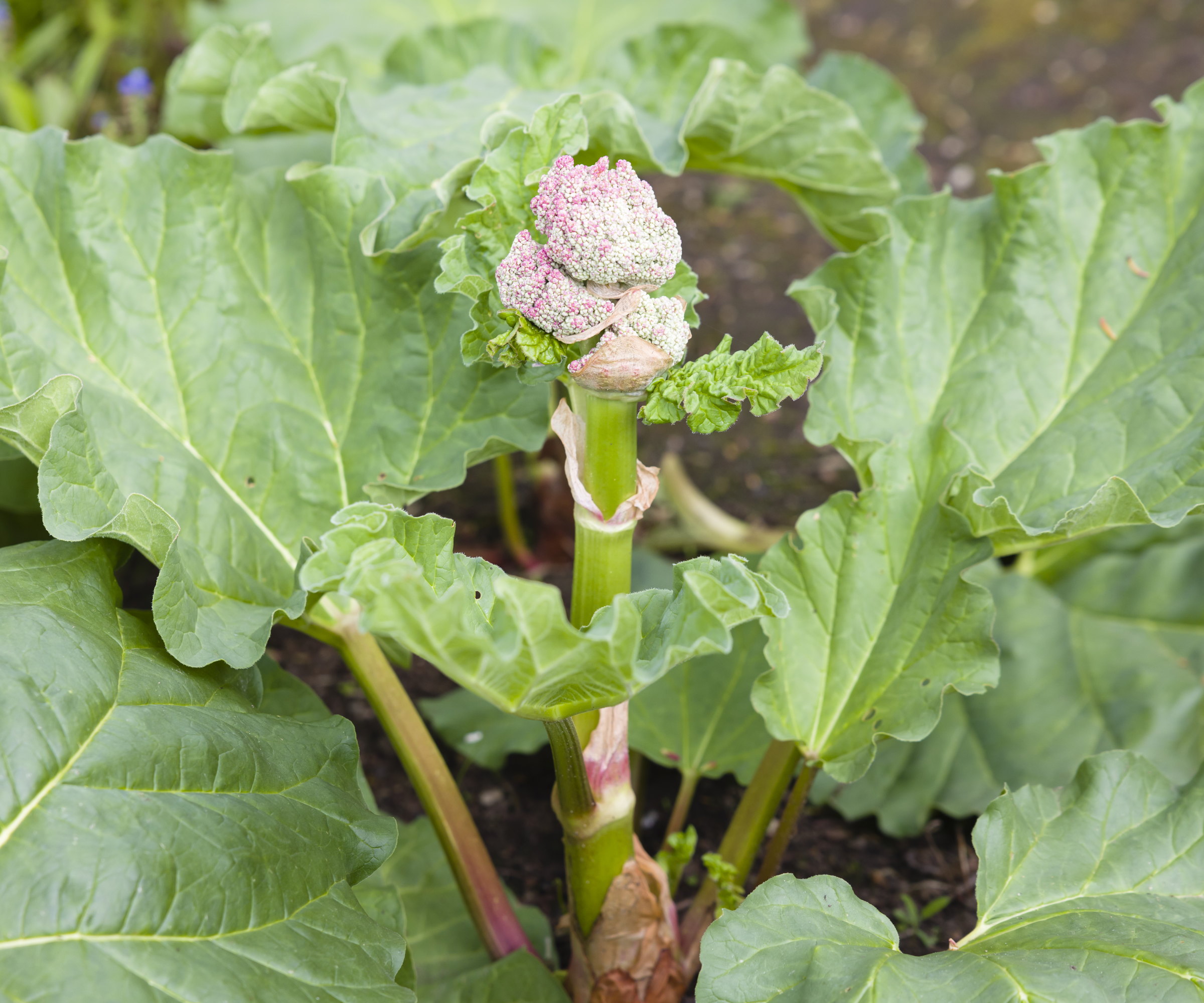
Small vegetable garden ideas require a bit of creative thinking. Mix edibles among your flowerbeds to emulate the traditional potager cottage garden ideas of the past, where flowers, vegetables, herbs and fruit were planted wherever they fit.
The vegetable or fruit plants can blend attractively beside other plants. Decorative choices to tuck in for small vegetable garden ideas include frilly lettuces and cabbages, architectural cardoons, runner beans and peas scrambling up tepees, rainbow chard and feathery asparagus and fennel.
An informal scheme, with scattered edibles, allows for staggered cropping and avoids the situation of feast or famine and patches of empty soil.
Smaller edibles, such as chives, parsley and ferny-topped carrots, make attractive edging to garden beds. Perennial herbs look good year-round, such as sage and ground-covering thyme with its pretty flowers.
Adding veg and fruit among your flowerbeds has a further practical advantage of creating a mosaic tapestry of colors and scents that confuses insect pests, making it difficult for them to find the veg or fruit they want to feed on. Flowering herbs will also attract beneficial insects.
18. Grow for color
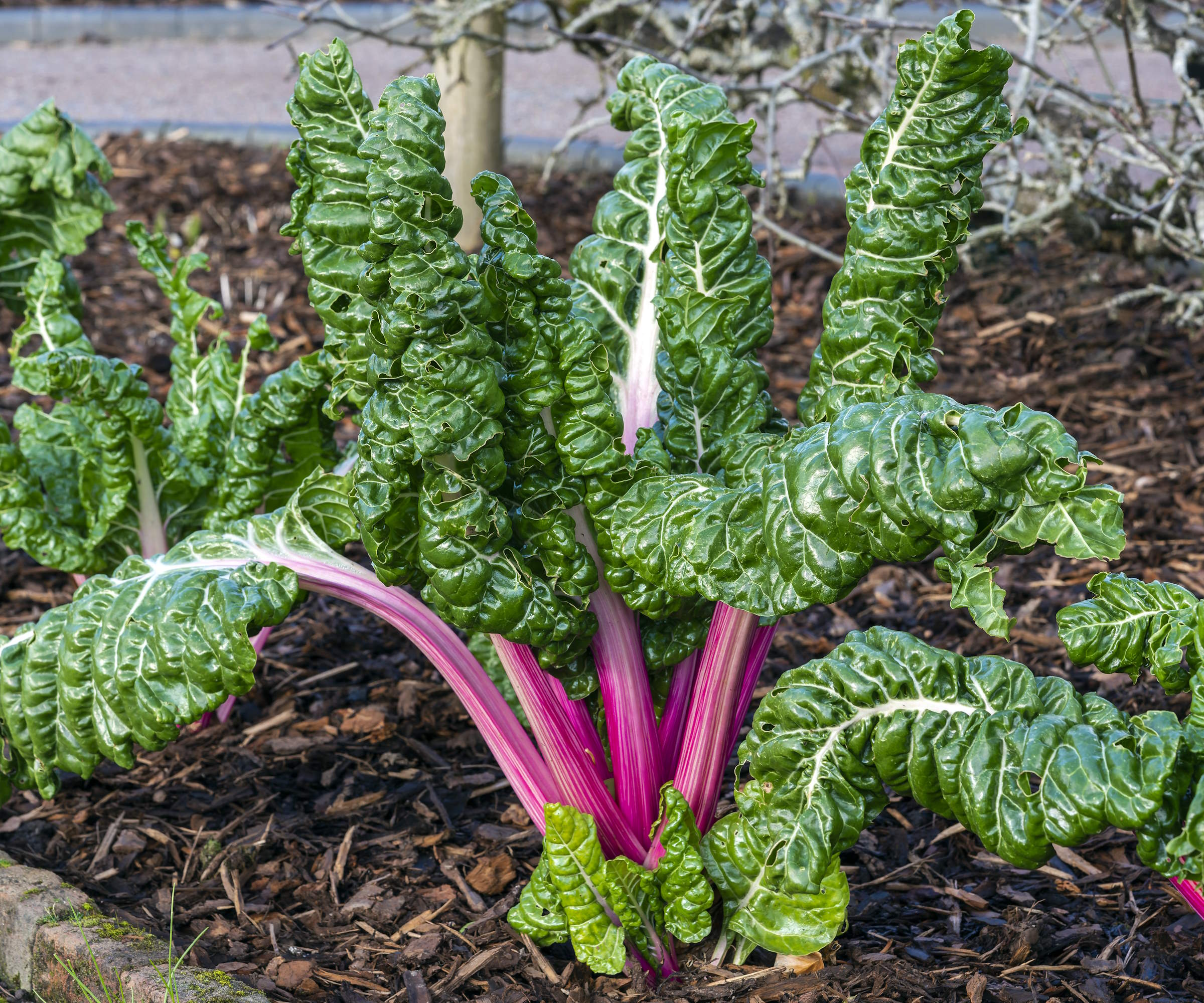
Of course, you'll want to grow what you love to eat, what suits your space, its position and soil type, but if you choose to grow crops for color in small vegetable garden ideas, you will be rewarded twofold with a tasty harvest that looks good while you are growing it. This Swiss chard is a case in point.
19. Create a vegetable garden in a window box
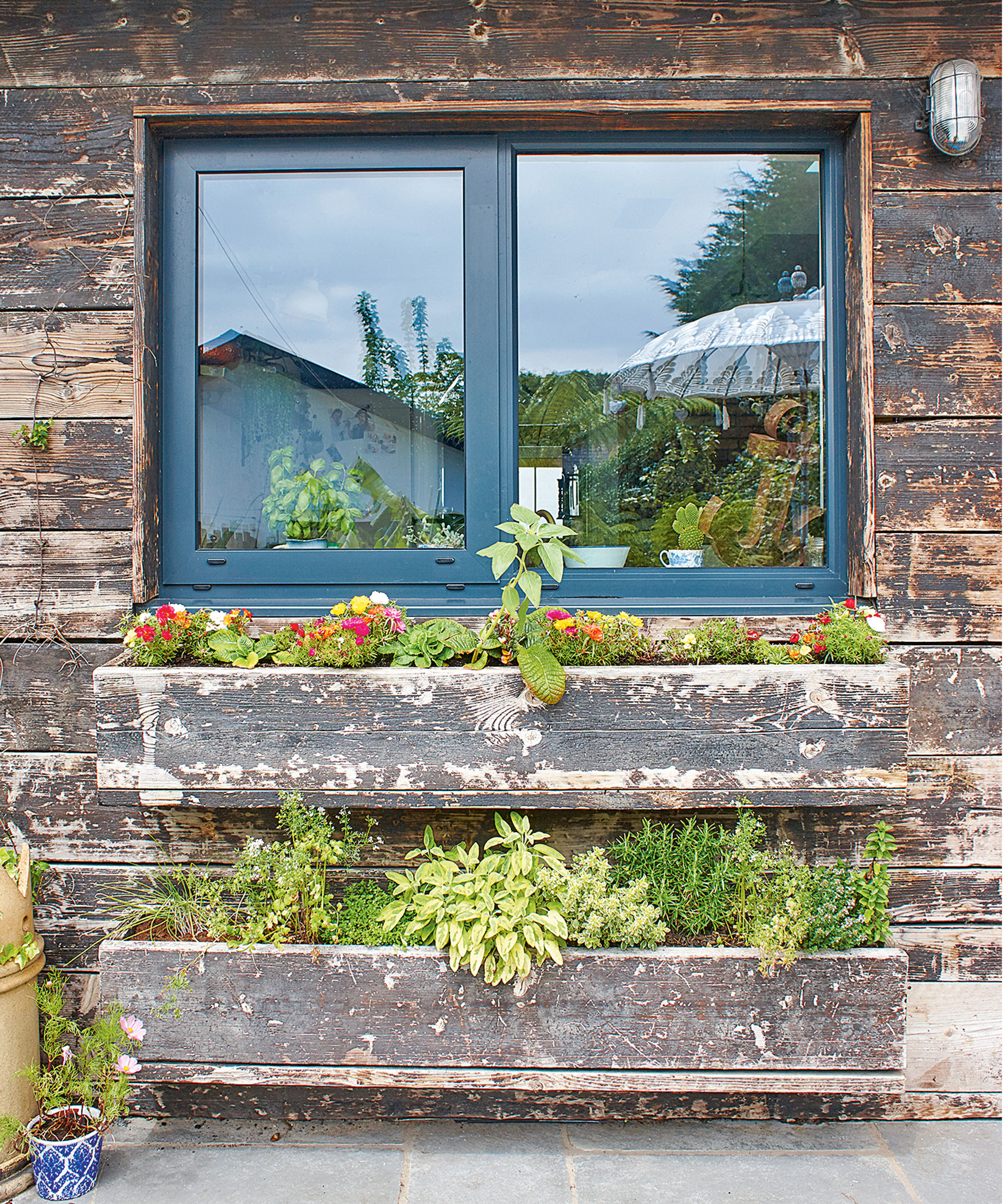
Window and planter box ideas are most suited to low-growing kitchen garden edibles, such as herbs and salad leaves, and need to suit the conditions that prevail at your window.
Planting 'recipes' to try include a mix of different mints, strawberries interspersed with parsley, or a one-stop salad garden with micro greens, salad leaves, chives, basil and edible flowers.
20. Grow fruit trees in containers
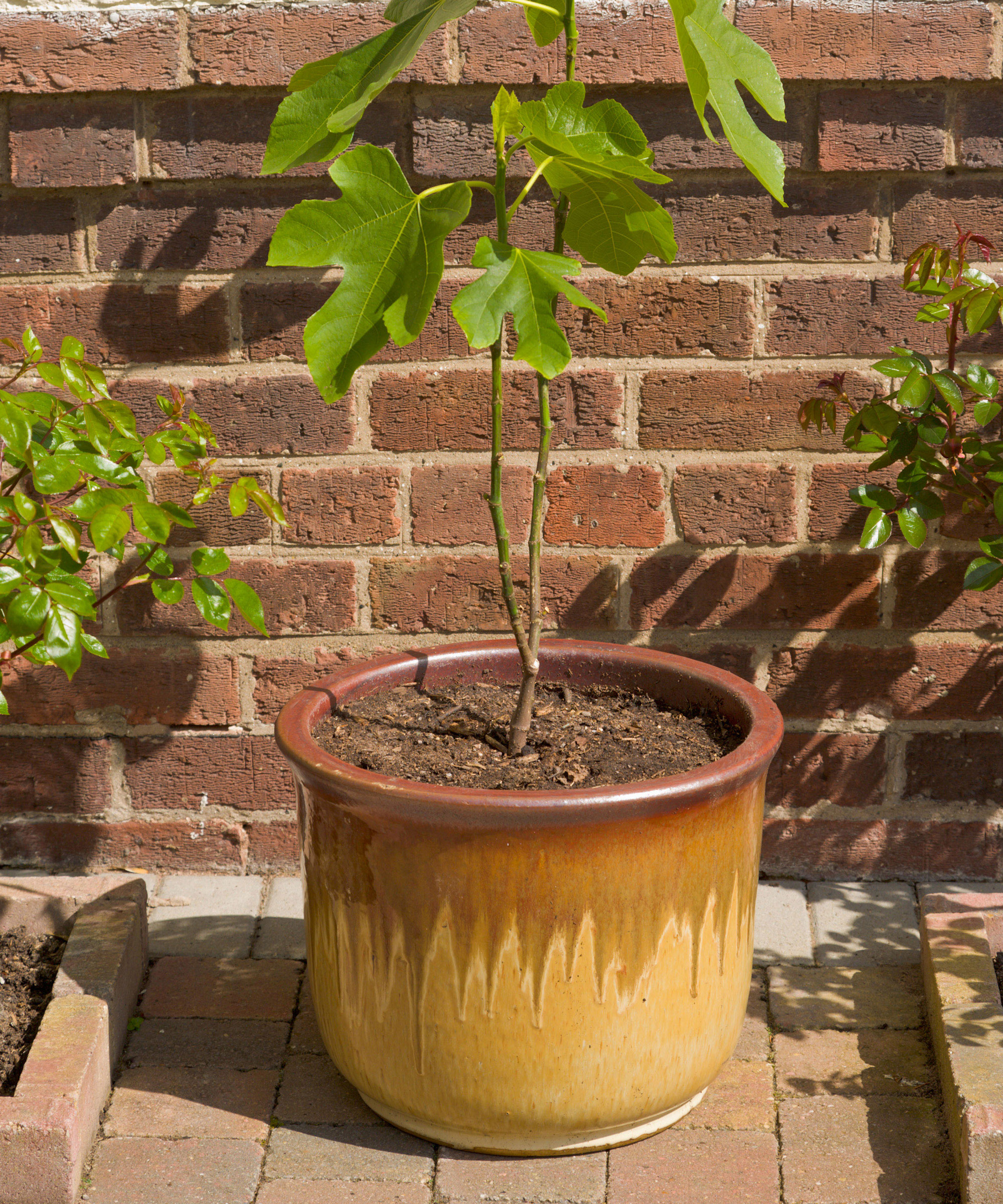
It is possible to include a lot of fruit, even in small vegetable garden ideas. Most fruit prefers a sunny position, making them ideal when planning roof garden ideas, but if your garden is in semi-shade, many of the choices below will still do well.
These can also be lovely growing in pots in a range of patio ideas, so they are close to hand when you're tempted to pluck a ripe fruit off the bush as you sit outside enjoying your garden.
Gooseberry bushes can be trained against a wall and do well in a large pot or container with regular watering and feeding. They love a sunny spot but will also fruit in shade and need a free-draining, moist soil. Prune annually in late autumn or winter.
Strawberries are easy to grow in pots, in the border or hanging baskets. They need rich, fertile soil and a sunny spot. Plant bare-root runners in late spring to early summer. Keep the compost moist and feed when the flowers appear.
Blueberries need an acid soil to do well, so use well-drained ericaceous soil for containers. Don’t let it outgrow the space, and repot into a slightly larger size. Feed with a rhododendron fertilizer and water well. They are self-fertile and you could have a couple in containers that fruit at different times.
Apples can grow in pots. Select ones that have been grafted onto a container rootstock. M27 is the smallest dwarf size and M9 is still dwarfing but more vigorous. You can also espalier as step-overs or against a fence, or plant into a flowerbed. Options include Fiesta, Discovery, Sunset and Falstaff.
Citrus trees, such as lemons and kumquats, can be grown in containers outdoors in summer and overwintered inside. Mix one part sand or grit to four parts soil potting mix. Use rainwater to water – ideal for sustainable small garden ideas.
21. Embrace grafted fruit trees to maximize space

You don’t have to have an orchard to be able to grow your own fruit. Dwarf fruit trees are some of the best trees for small gardens and can be planted directly into an ornamental bed, valued for their pretty blossom as well as fruit, and intermingled with roses as ideal companions.
There are plenty of dwarf varieties that will thrive as part of your small vegetable garden ideas or even as part of your container garden.
From apples and pears through to cherries and apricots, there are dwarf varieties available for most of the best fruit trees, meaning you don't have to miss out despite your small plot.
If you are really short of space, however, consider grafted fruit trees. In duo fruit trees, two different trees are grafted onto a single rootstock. This means you can have multiple varieties of fruit from one tree.
One example of a multi-grafted fruit tree is this compact Fruit Cocktail Tree at Fast Growing Trees that produces peaches, plums, nectarines and apricots on one tree.
22. Add a rain barrel
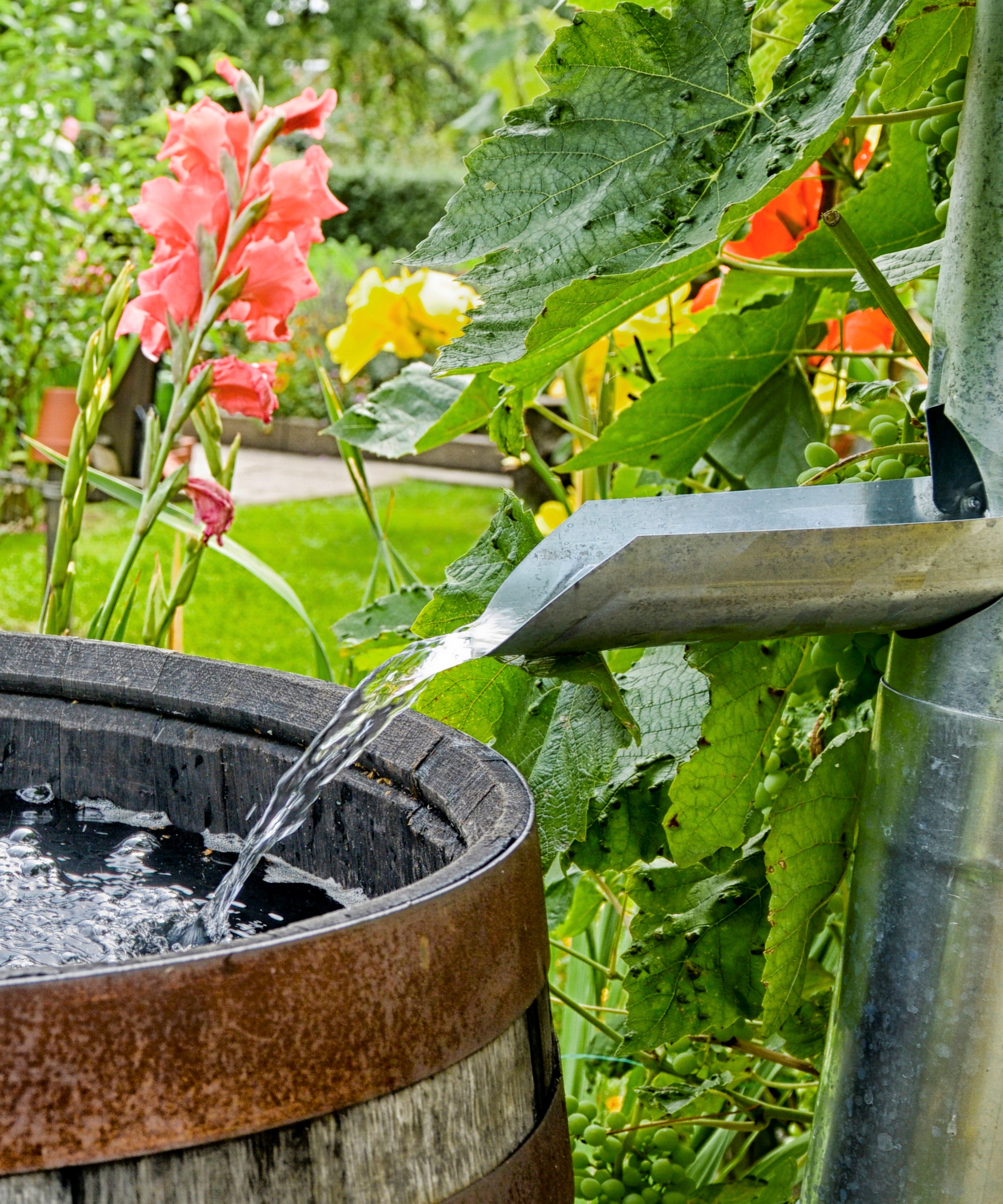
Sustainability is important in every walk of our lives, and the garden is no different. Incorporating vegetable garden ideas into your backyard is a great way to reduce your carbon footprint.
In addition to this, there are other sustainable garden ideas to help make your veg plot even more environmentally-friendly – one of the easiest ways is to add a rain barrel.
Adding a rain barrel (rain barrels are available at Amazon) is a brilliant way to harvest rainwater, which you can then use to water your crops.
'Using rain water for plants eases demand for mains water, is freely supplied, and has zero footprint for treatment and distribution,' says Dr Mark Gush, Head of Environmental Horticulture at the RHS.
'Furthermore, rain water is slightly acidic, lowering the pH when applied to soil, facilitating the release of soil nutrients and their uptake by plants, as well as counteracting gradual increases in pH associated with prolonged use of treated mains water.'
23. Don't forget to factor in pathways
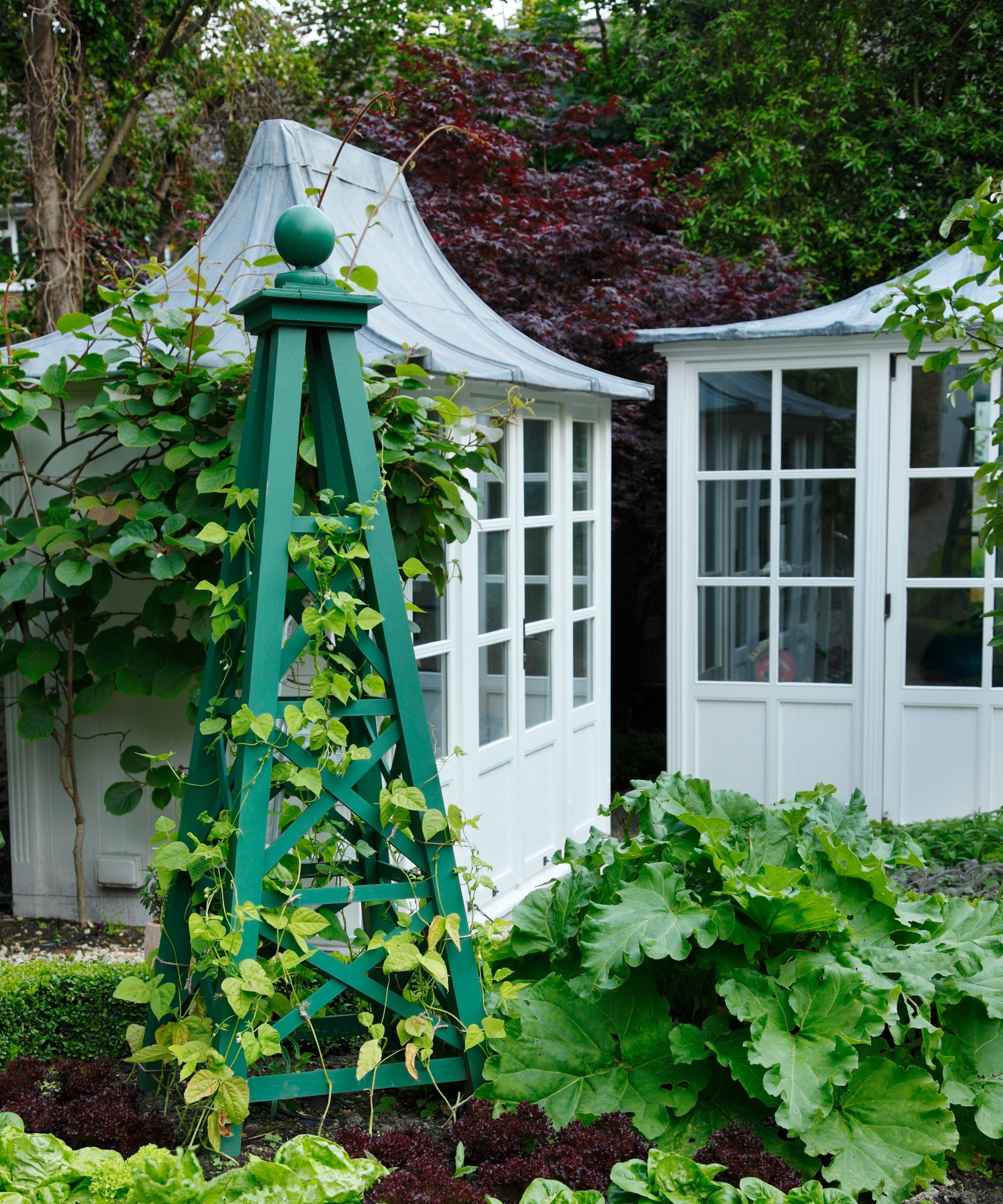
Access is an important part of vegetable garden ideas, as unlike a flower border, you need to be able to reach all the plants for tending and harvesting. As well as aiding access, garden path ideas also help to create an organized vegetable garden.
If you're wondering, 'How can I make my vegetable garden more attractive?' then adding borders and a path will instantly elevate the plot, giving it structure and order.
The variation of materials you could choose for your path can create different effects in your vegetable garden.
Pebbles are a great choice for laid-back cottage garden ideas – pair with arches covered in floral blooms and large terracotta planters to embrace the romantic potager aesthetic.
24. Encourage wildlife to your vegetable garden
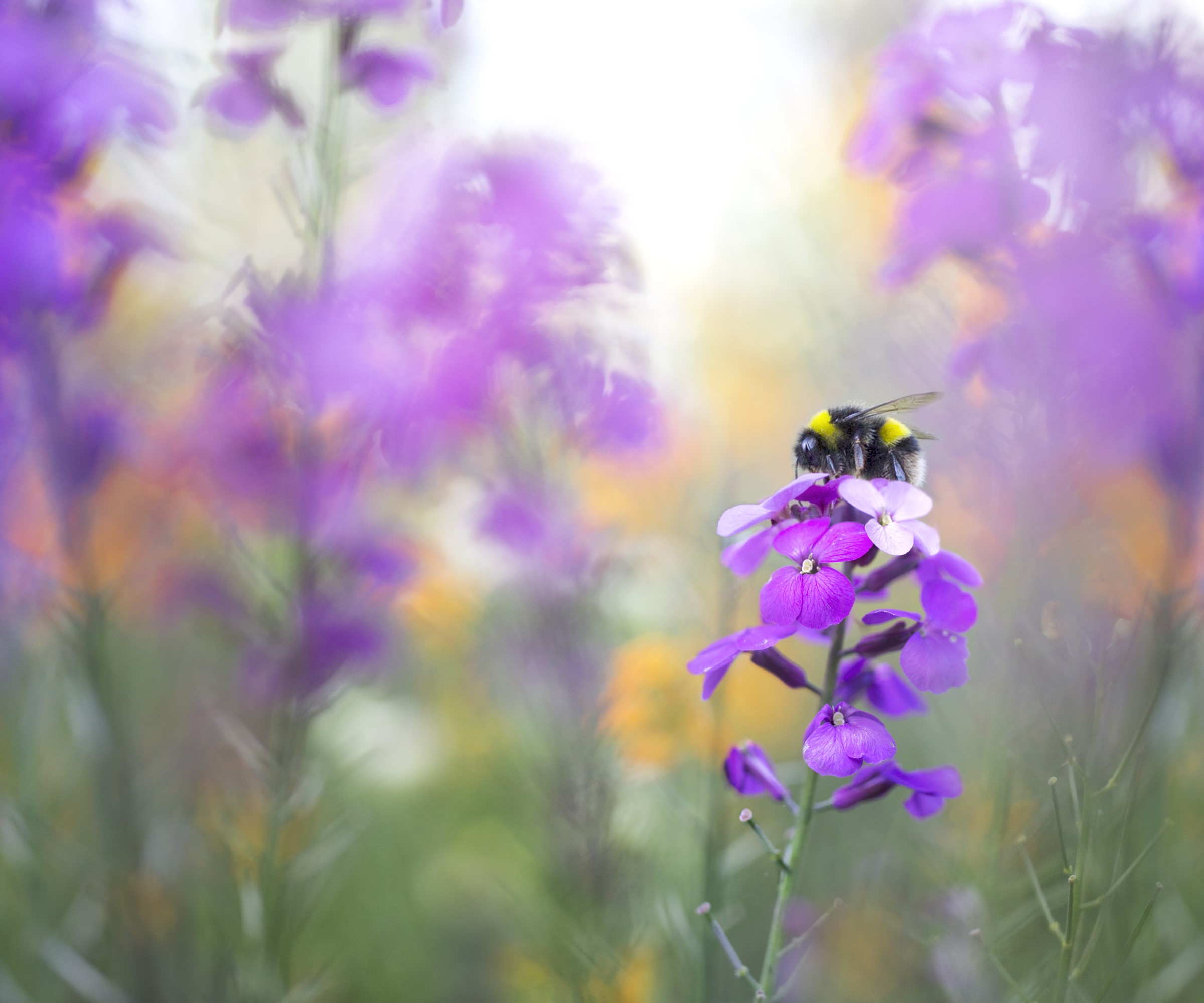
'Overly clean plots with no flowers do little to help fruit production or even some vegetables, especially courgette and marrow. Mono-cropping must be avoided everywhere in our gardens,' advises Rosy Hardy, owner of plantsman’s nursery Hardy’s Plants.
25. Add a seating area to your vegetable garden

From researching vegetable garden ideas to creating a vegetable garden that is brimming with produce and character is undeniably hard work.
Therefore it is important that you also take time to enjoy your space. Incorporating a dedicated seating area, whether that's a bench or arbor into your vegetable garden ideas gives you a space to relax, letting you take a minute to enjoy the beauty and productivity of your plot. It also provides a handy spot for that all important coffee break.
FAQs
How do I layout my vegetable garden?
Layout your vegetable garden by creating a series of borders – whether raised, in the ground or in pots – separated by paths for a traditional vegetable garden.
Take inspiration from how to plan a garden to provide a backbone to your plot and curate the design based on the vegetables you want to grow.
'Unless crops need special protection, it can be helpful to mix the plantings, as a large area of a single crop attracts pests and the mix of different edibles and ornamentals confuses them. It is helpful to draw the design on paper first before marking out or planting,' advises Leigh Clapp.
How do you lay out a small vegetable garden?
Stagger the planting for small vegetable garden ideas so there is always something to harvest.
Longer-term crops, such as cabbages and broccoli, can be interplanted with faster-growing options, including cut-and-come-again salad mixes, pea shoots, mizuna, arugula and radishes, which are ready to eat from about six weeks from seed.
Many crops can be continually picked, including cherry tomatoes, chillies, chard, beans and snow peas.
For north-facing or spaces with less sunlight, like narrow, long gardens, try shade-tolerant edibles, such as spinach, chard, kale, arugula, sorrel, Asian and salad leaves, Alpine strawberries, rhubarb, currants, mint, bay, coriander, chives, parsley, chamomile and tarragon.
Also, take into account when to plant vegetables as well as where to place them. This will help you to design your small vegetable garden.
When can I start planting my vegetable garden?
You can start planting your vegetable garden from early winter throughout spring, though you can grow vegetables all year around – so long as you pick the right variety.
'Cool-season vegetables, like cabbage, kale, broccoli, cauliflower, and Swiss Chard, can be planted four weeks or more before the last spring frost, depending on the plant,' suggests Amy Enfield, Horticulturist for Bonnie Plants.
'For garden mainstays, like tomatoes, peppers, cucumbers, and melons, planting starts once all chances of frost have passed. Temperatures at night should be consistently above 50 degrees before warm-season vegetables are planted outside. In the south, warm-season planting can be late March through early April, while in the North, mid-May through early June is usually the best time to start planting. '
'You can always ask your own state’s cooperative extension service to answer questions on when to start vegetable seeds and what types of veggies grow best in your area,' advises Idelle Fisher from Sandia Seeds.
To help keep your growing budget-friendly and self-sustainable, this guide to some of the best vegetable garden hacks can inspire you to save seeds, protect crops, water plants more efficiently, and do more recycling in the vegetable garden.

Leigh Clapp is a professional photographer with over 25 years experience, primarily as a garden specialist photojournalist but also with food and travel. She delights in exploring gardens, discovering the tiny elements to their overall essence and meeting lots of enthusiastic gardeners along the way. Leigh’s work appears in magazines, newspapers and books, both in the UK and abroad, including Period Living, Country Life, and Gardens Illustrated; as well as being sole photographer for a number of books, including Garden Details, Feng Shui in the Garden, Vertical Gardens and From the Garden – fresh seasonal cooking.
- Rachel Crow
- Holly ReaneyContent Editor and Sub-editor
- Drew SwainstonContent Editor
